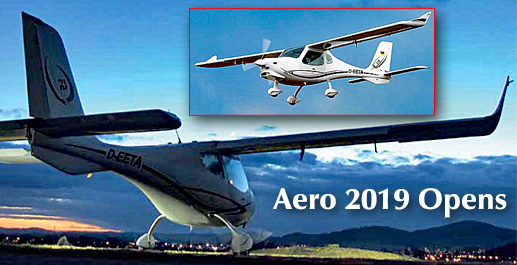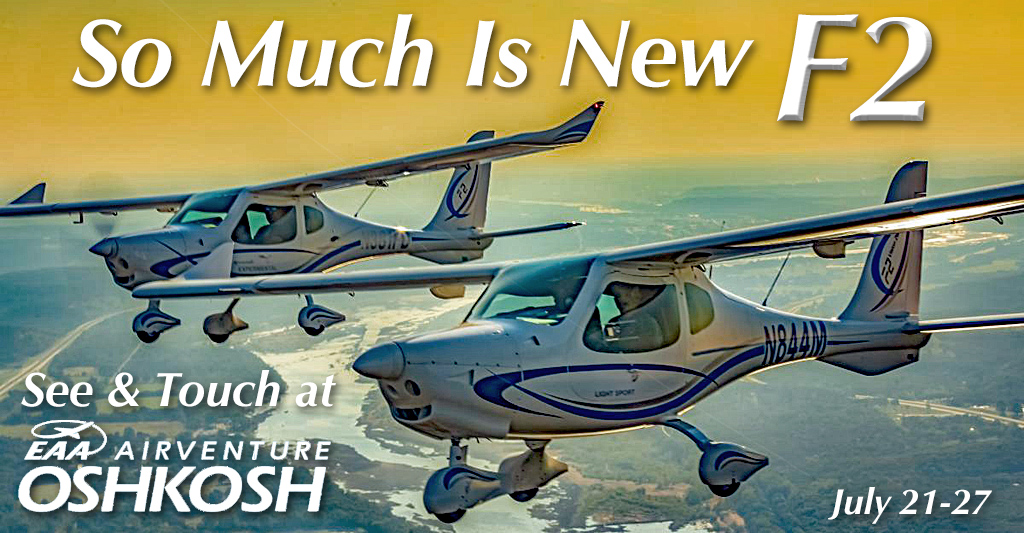
Since Light-Sport Aircraft first arrived on the aviation scene back in 2004, one brand has lead the fleet as it grew impressively. Flight Design has manufactured nearly 2,000 aircraft over those 21 years. Its several models can be found in most countries on Earth. After producing hundreds of CT-series LSA, the German company introduced their all-new F2 model with FAA’s still-to-come Mosaic regulation in mind. In every way, F2 is a premium upgrade to their earlier model. Numerous pilots have placed deposits. Imagine the challenge. Before Russia invaded, the Germany company did most of their fabrication in Ukraine. As hostilities increased, the company relocated staff, tooling, and inventory to the Czech Republic. Similar to most airframe builders, many components are sourced from countries best at manufacturing those parts. So Flight Design is already — has long been — an international company with operations in several nations. That it has new Chinese ownerships speaks significantly to businessmen in that country having the funds needed.


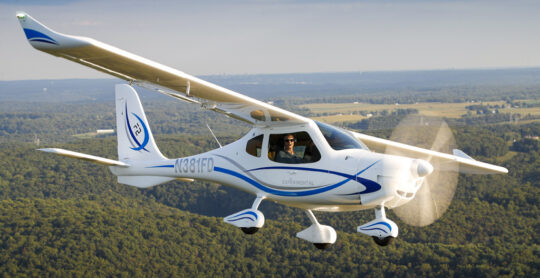 Since Light-Sport Aircraft first arrived on the aviation scene back in 2004, one brand has lead the fleet as it grew impressively. Flight Design has manufactured nearly 2,000 aircraft over those 21 years. Its several models can be found in most countries on Earth.
After producing hundreds of CT-series LSA, the German company introduced their all-new F2 model with FAA's still-to-come Mosaic regulation in mind. In every way, F2 is a premium upgrade to their earlier model. Numerous pilots have placed deposits.
Since Light-Sport Aircraft first arrived on the aviation scene back in 2004, one brand has lead the fleet as it grew impressively. Flight Design has manufactured nearly 2,000 aircraft over those 21 years. Its several models can be found in most countries on Earth.
After producing hundreds of CT-series LSA, the German company introduced their all-new F2 model with FAA's still-to-come Mosaic regulation in mind. In every way, F2 is a premium upgrade to their earlier model. Numerous pilots have placed deposits.
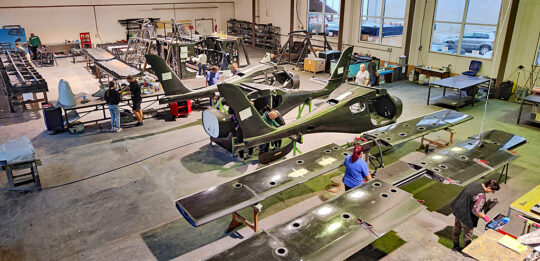 Imagine the challenge.
Imagine the challenge.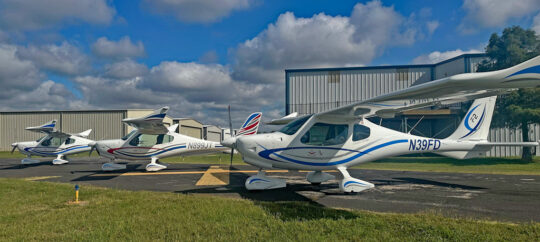 Some Americans are not fond of Chinese leadership even though we buy plenty of products from their companies. Several prominent American brands have been acquired by Chinese investors, including Cirrus, Continental, Icon, and Glasair. Chinese investors also own Diamond Aircraft and now, Flight Design. One of the first acquisitions, Cirrus, has been Chinese owned since 2011. Given steady sales since then, buyers seem unconcerned.
American LSA enthusiasts looking at F2 will be served by a U.S. company run by Americans. Airtime Aviation, now in its second generation of family operation, knows the light aircraft market as well as any dealership in the USA. How can I be so sure? Well, they have long been the largest and most successful retailer of LSA in America. They know you. They like you. They speak your language.
Some Americans are not fond of Chinese leadership even though we buy plenty of products from their companies. Several prominent American brands have been acquired by Chinese investors, including Cirrus, Continental, Icon, and Glasair. Chinese investors also own Diamond Aircraft and now, Flight Design. One of the first acquisitions, Cirrus, has been Chinese owned since 2011. Given steady sales since then, buyers seem unconcerned.
American LSA enthusiasts looking at F2 will be served by a U.S. company run by Americans. Airtime Aviation, now in its second generation of family operation, knows the light aircraft market as well as any dealership in the USA. How can I be so sure? Well, they have long been the largest and most successful retailer of LSA in America. They know you. They like you. They speak your language.
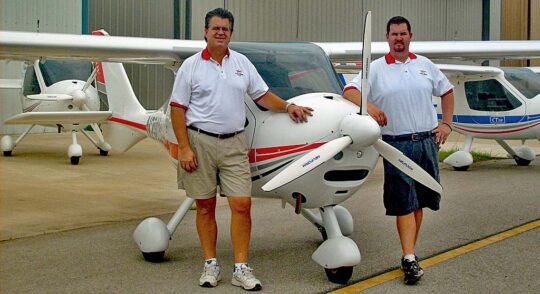
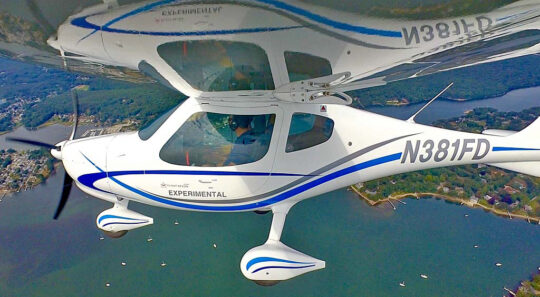 SG Investments is channeling their energy and resources into enhancing the Flight Design's Czech production facility. "They have laid out ambitious plans to ramp up production to four airplanes per month by the close of 2025," said Tom. "SG will go further with a brand-new facility in the Czech Republic, proving their commitment to innovation and expansion."
"SG Investments is officially an American company," though Tom observed this is merely offices. "Production will remain in Europe where a top Chinese executive for the company has lived for the last 19 years." Shang Gong Group is big in manufacturing. The corporation employs 5,200 employees, of which 2,200 (42%) are not in China. Principally, they make sewing machines, Tom identified.
SG Investments is channeling their energy and resources into enhancing the Flight Design's Czech production facility. "They have laid out ambitious plans to ramp up production to four airplanes per month by the close of 2025," said Tom. "SG will go further with a brand-new facility in the Czech Republic, proving their commitment to innovation and expansion."
"SG Investments is officially an American company," though Tom observed this is merely offices. "Production will remain in Europe where a top Chinese executive for the company has lived for the last 19 years." Shang Gong Group is big in manufacturing. The corporation employs 5,200 employees, of which 2,200 (42%) are not in China. Principally, they make sewing machines, Tom identified.
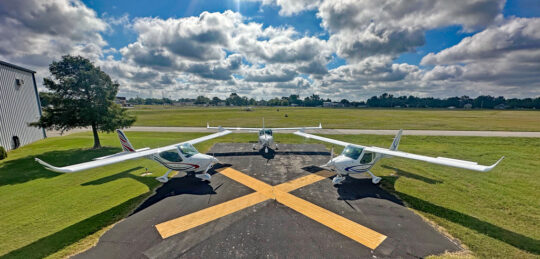 "While seeking a new F2 production facility, close to an airport, SG wants a highly professional factory aiming to modernize production," Tom added. "They already have personnel and equipment for this." New facilities will let Flight Design raise production from four F2s per month to six per month.
"While seeking a new F2 production facility, close to an airport, SG wants a highly professional factory aiming to modernize production," Tom added. "They already have personnel and equipment for this." New facilities will let Flight Design raise production from four F2s per month to six per month.
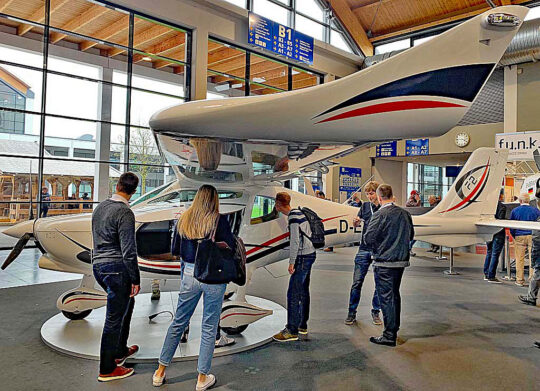
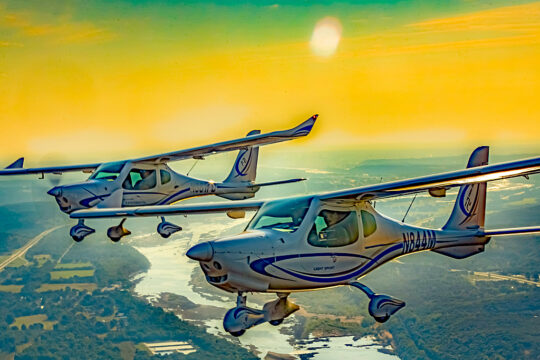 Airtime Aviation, based centrally in Tulsa, Oklahoma aims to ensure that individuals and businesses across the United States have access to Flight Design's cutting-edge aircraft. "We manage the entire importation process, ensuring full compliance with FAA regulations, and offer a robust network of sales and independent, qualified service centers throughout the country," Tom added.
Although Airtime does not directly offer flight training, the Tulsa company is a strong advocate for safe and effective flight instruction and can connect buyers with flight schools and instructors who know and operate Flight Design aircraft.
See F2 and speak to Airtime representatives at EAA AirVenture Oshkosh 2025 running from July 21 to 27.
Airtime Aviation, based centrally in Tulsa, Oklahoma aims to ensure that individuals and businesses across the United States have access to Flight Design's cutting-edge aircraft. "We manage the entire importation process, ensuring full compliance with FAA regulations, and offer a robust network of sales and independent, qualified service centers throughout the country," Tom added.
Although Airtime does not directly offer flight training, the Tulsa company is a strong advocate for safe and effective flight instruction and can connect buyers with flight schools and instructors who know and operate Flight Design aircraft.
See F2 and speak to Airtime representatives at EAA AirVenture Oshkosh 2025 running from July 21 to 27.
 This video was recorded at Midwest LSA Expo 2020
This video was recorded at Midwest LSA Expo 2020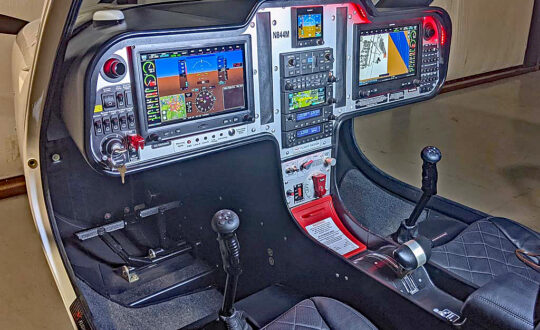
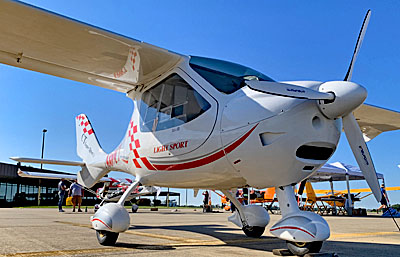 "We have recently moved production of the CT-series — including CTLSi and CT Super (nearby image), which continue to be popular worldwide — to our new partners in Kazakhstan. This allows us to focus more on the F2 at Sumperk,” said Daniel.
If you can't recall where Kazakhstan is, don't fret. Such remote fabrication has been used by Boeing and Airbus for many years. The parent company in Germany is permitted to sublet work to off-site facilities so long as they maintain control of the design and conduct regular oversight of production and quality control. After many years of doing exactly that in Ukraine, Flight Design is well equipped to pursue building its CT-series in Kazakhstan, Central Asia.
"We have recently moved production of the CT-series — including CTLSi and CT Super (nearby image), which continue to be popular worldwide — to our new partners in Kazakhstan. This allows us to focus more on the F2 at Sumperk,” said Daniel.
If you can't recall where Kazakhstan is, don't fret. Such remote fabrication has been used by Boeing and Airbus for many years. The parent company in Germany is permitted to sublet work to off-site facilities so long as they maintain control of the design and conduct regular oversight of production and quality control. After many years of doing exactly that in Ukraine, Flight Design is well equipped to pursue building its CT-series in Kazakhstan, Central Asia.
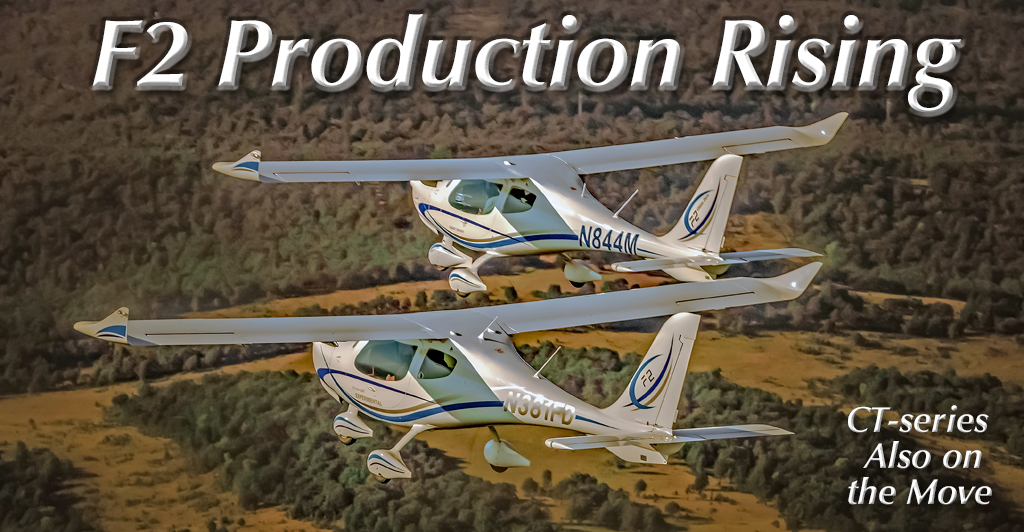
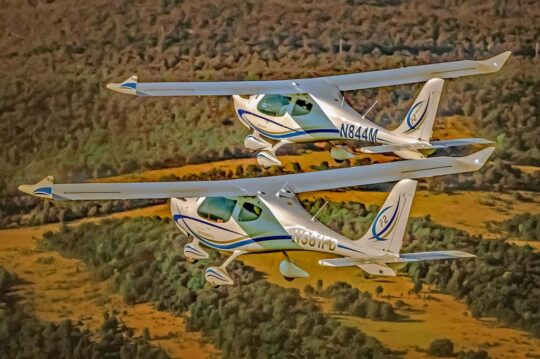 In the middle of the last decade, long before Putin's aggression, LSA market leader Flight Design went through a German-imposed reorganization. While difficult, the company emerged stronger and more stable.
In development through this challenging time, Flight Design unveiled their new F-series, starting with their two-seat LSA F2 model at Aero Friedrichshafen 2019. They also displayed an F2e powered by electric motor. Those who examined these displays could readily see the spacious fuselage was built with a four seater in mind for the future. Things were progressing well…
In the middle of the last decade, long before Putin's aggression, LSA market leader Flight Design went through a German-imposed reorganization. While difficult, the company emerged stronger and more stable.
In development through this challenging time, Flight Design unveiled their new F-series, starting with their two-seat LSA F2 model at Aero Friedrichshafen 2019. They also displayed an F2e powered by electric motor. Those who examined these displays could readily see the spacious fuselage was built with a four seater in mind for the future. Things were progressing well…
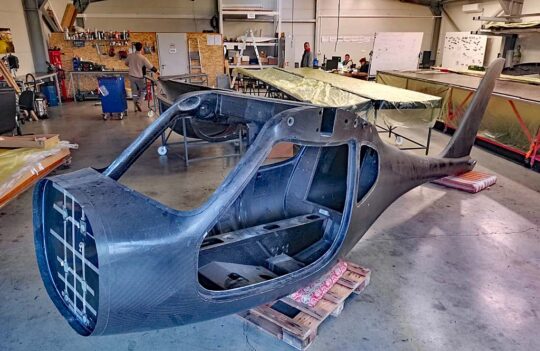
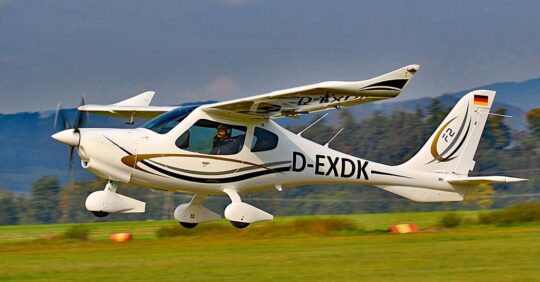 Despite such hardships, Flight Design's German leaders and team closed ranks and moved production to Šumperk, Czech Republic, near the country's northern border with Poland, about 100 miles east of Prague.
“[The company is using] a new, 25,000-square-foot site suitable for use as a production and paint shop,” reported longtime importer, Tom Peghiny in an article from AOPA. The company had been doing some development work in Czech and now expanded their footprint to take up manufacturing. This represented a huge effort under the most trying — and dangerous — of conditions.
The accompanying images show elements of the work to establish a new production facility. Since most molds and other tooling could not be removed from Kherson to Šumperk — about 1,000 miles to the west — the company had to acquire new production jigs and they had to do this while supply lines were pinched, shipping costs were sky-high, and interest rates were rising on funds needed to create a new manufacturing plant.
Despite such hardships, Flight Design's German leaders and team closed ranks and moved production to Šumperk, Czech Republic, near the country's northern border with Poland, about 100 miles east of Prague.
“[The company is using] a new, 25,000-square-foot site suitable for use as a production and paint shop,” reported longtime importer, Tom Peghiny in an article from AOPA. The company had been doing some development work in Czech and now expanded their footprint to take up manufacturing. This represented a huge effort under the most trying — and dangerous — of conditions.
The accompanying images show elements of the work to establish a new production facility. Since most molds and other tooling could not be removed from Kherson to Šumperk — about 1,000 miles to the west — the company had to acquire new production jigs and they had to do this while supply lines were pinched, shipping costs were sky-high, and interest rates were rising on funds needed to create a new manufacturing plant.
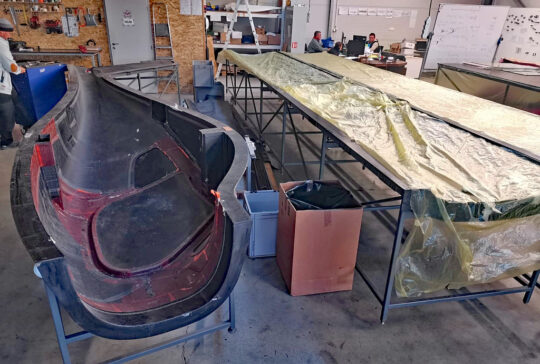
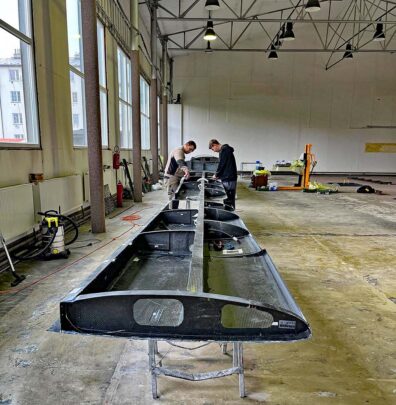
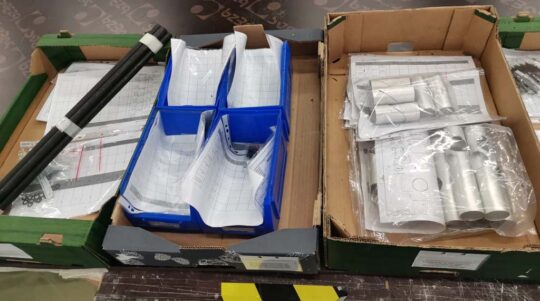
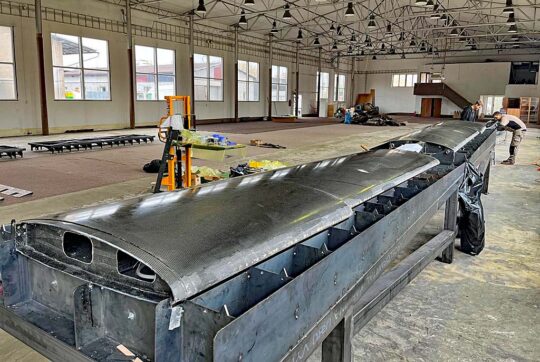
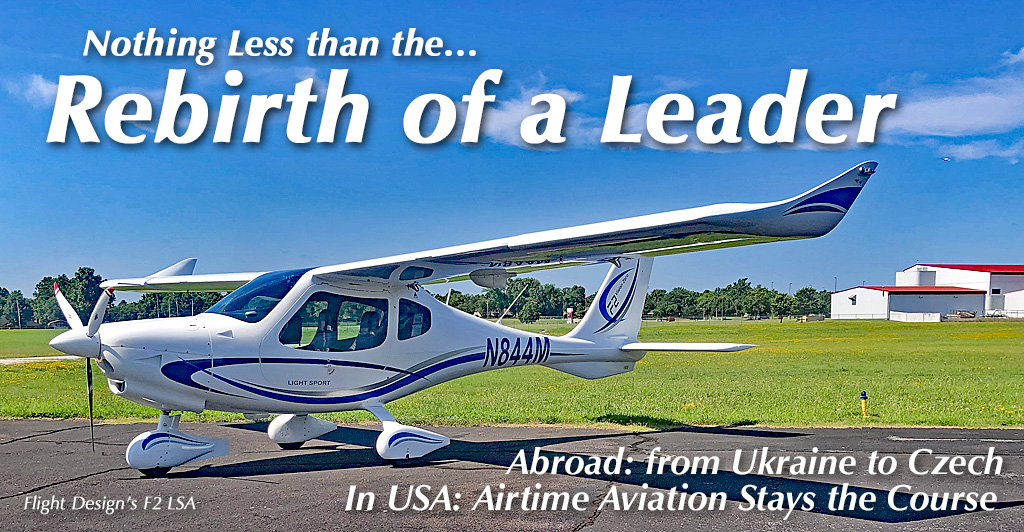
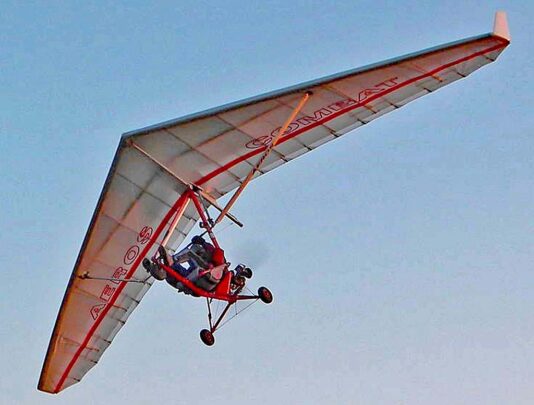
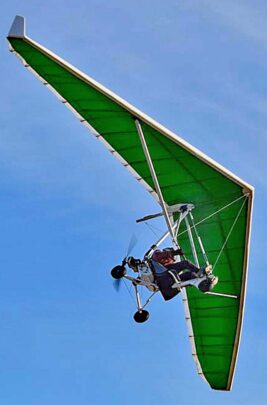 Still the Aeros team continues to build and deliver their flying machines, ranging from hang gliders to trikes to the Sky Ranger three-axis airplanes (
Still the Aeros team continues to build and deliver their flying machines, ranging from hang gliders to trikes to the Sky Ranger three-axis airplanes (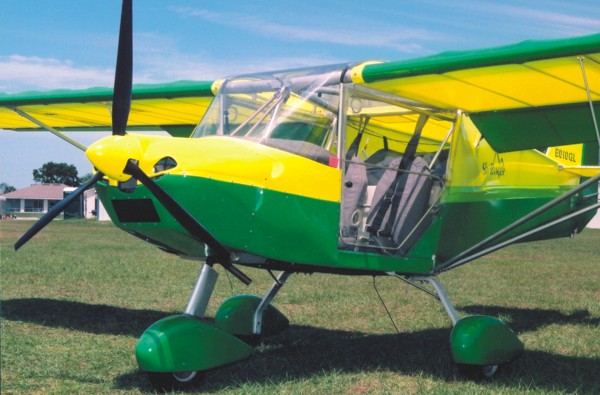
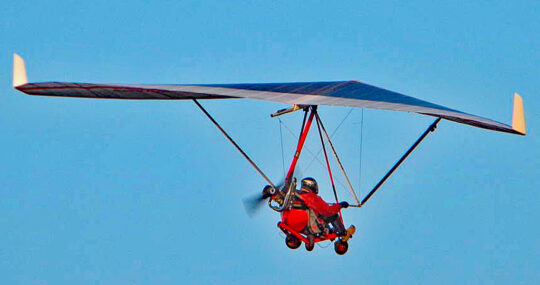
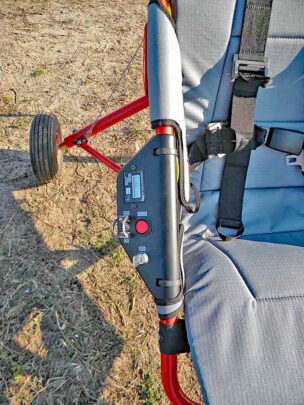 Fox T is another wing for nanolight trikes, created for "those who want to feel the simplicity and real pleasure of bird-like flying," said Aeros. Fox T offers low and slow maneuverable flying. "Fox T has been developed from our beginner Fox glider and has been reinforced and adapted exclusively for flying with nanolight trikes," Aeros clarified.
For experienced pilots wanting maximum performance, Aeros offers their Combat T, "a step higher in nanolight technology, designed for those who want to fly faster and farther."
Besides the Polini or Vittorazi two-stroke engines adapted from the powered paraglider industry, Aeros offers a
Fox T is another wing for nanolight trikes, created for "those who want to feel the simplicity and real pleasure of bird-like flying," said Aeros. Fox T offers low and slow maneuverable flying. "Fox T has been developed from our beginner Fox glider and has been reinforced and adapted exclusively for flying with nanolight trikes," Aeros clarified.
For experienced pilots wanting maximum performance, Aeros offers their Combat T, "a step higher in nanolight technology, designed for those who want to fly faster and farther."
Besides the Polini or Vittorazi two-stroke engines adapted from the powered paraglider industry, Aeros offers a 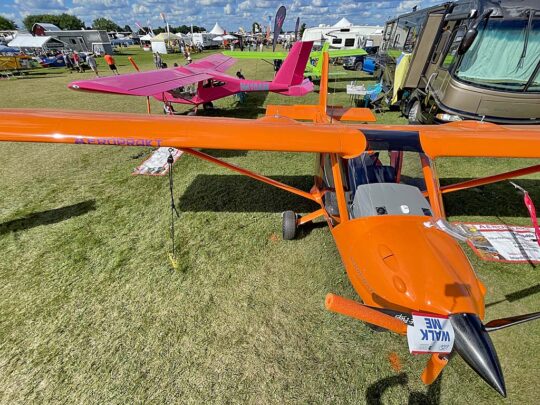 When I visited this company many years ago, they were new in western markets. Fortunately for them, a wealthy Saudi Arab businessman and flying enthusiast helped bankroll the new company.
On my visit, I saw an active operation with workers buzzing to build aircraft. However, they did so in a converted factory that was far from optimal. They made it work but they had ambitions for another facility.
When I visited this company many years ago, they were new in western markets. Fortunately for them, a wealthy Saudi Arab businessman and flying enthusiast helped bankroll the new company.
On my visit, I saw an active operation with workers buzzing to build aircraft. However, they did so in a converted factory that was far from optimal. They made it work but they had ambitions for another facility.
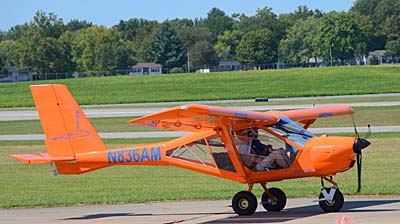
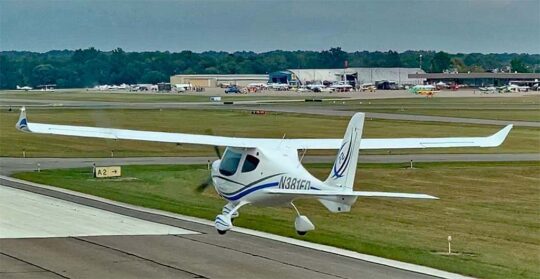
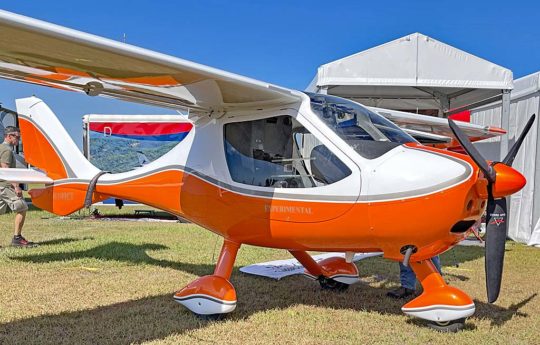
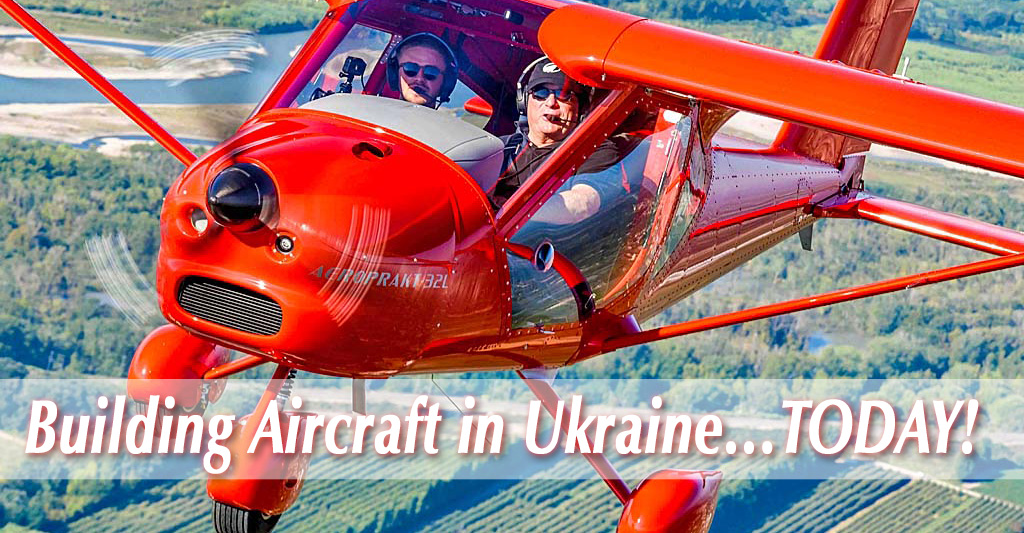
 Rather loudly and persistently I beat the drum about "affordable aircraft," but readers also enjoy learning about other aircraft. I will never write about jets or multimillion-dollar turbines but I will continue to follow any "light" aircraft that meets LSA parameters now or after the Mosaic rule.
In this article I will describe how two aircraft are pursuing conventional certification: Flight Design’s F2-CS23 and Icon’s A5.
Rather loudly and persistently I beat the drum about "affordable aircraft," but readers also enjoy learning about other aircraft. I will never write about jets or multimillion-dollar turbines but I will continue to follow any "light" aircraft that meets LSA parameters now or after the Mosaic rule.
In this article I will describe how two aircraft are pursuing conventional certification: Flight Design’s F2-CS23 and Icon’s A5.
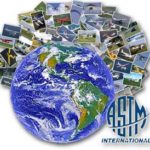 Contrary to common language, LSA are not "certified." Instead a manufacturer declares they meet ASTM standards and FAA "accepts" that declaration. Frequently at first, FAA audited producers in a point-by-point check of their declaration plus verifying that producers use generally-accepted best practices in their manufacturing. Companies with prior approvals may not be required to undergo an audit; it's always FAA's choice.
I've been involved with ASTM for many years and I can attest to these standards being very rigorous. They were welcomed by many countries where they are in active use. Indeed, FAA is using ASTM standards for LSA as a model for a future approval system for Part 23 general aviation aircraft. Nonetheless, a Standard Certificate is required for some countries; LSA have a Special Certificate. So, some companies believe it is in their best interest to obtain the higher level of approval.
Contrary to common language, LSA are not "certified." Instead a manufacturer declares they meet ASTM standards and FAA "accepts" that declaration. Frequently at first, FAA audited producers in a point-by-point check of their declaration plus verifying that producers use generally-accepted best practices in their manufacturing. Companies with prior approvals may not be required to undergo an audit; it's always FAA's choice.
I've been involved with ASTM for many years and I can attest to these standards being very rigorous. They were welcomed by many countries where they are in active use. Indeed, FAA is using ASTM standards for LSA as a model for a future approval system for Part 23 general aviation aircraft. Nonetheless, a Standard Certificate is required for some countries; LSA have a Special Certificate. So, some companies believe it is in their best interest to obtain the higher level of approval.
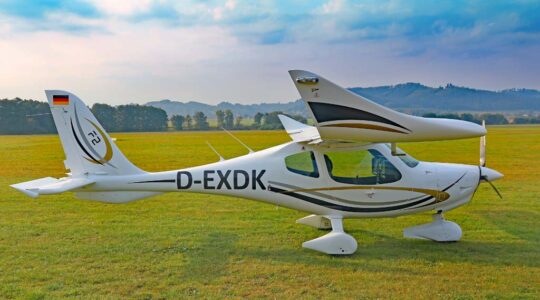 “We couldn’t be happier to see this important step for the F2 program, which ultimately will lead to the F4 four-seat version and the all-electric F2e,” said Matthias Betsch, Head of Flight Design's Design Organization department that created the F-Series and many of its advanced concepts.
"The F2-CS23 is the next step in Flight Design’s ‘Vision Zero’ concept which incorporates all commercially available safety features appropriate for this type of aircraft," the company elaborated. "These features include: a passive stall and spin resistant airframe design; airframe emergency parachute system; Amsafe-brand airbags and inertial reel harnesses; Garmin ESP (electronic stability and envelope protection); a strong occupant-protective enclosure for the pilot and passengers; automatic fuel management; simplified controls such as a combined throttle and brake lever; and a more modern, car-like atmosphere and operation."
“We couldn’t be happier to see this important step for the F2 program, which ultimately will lead to the F4 four-seat version and the all-electric F2e,” said Matthias Betsch, Head of Flight Design's Design Organization department that created the F-Series and many of its advanced concepts.
"The F2-CS23 is the next step in Flight Design’s ‘Vision Zero’ concept which incorporates all commercially available safety features appropriate for this type of aircraft," the company elaborated. "These features include: a passive stall and spin resistant airframe design; airframe emergency parachute system; Amsafe-brand airbags and inertial reel harnesses; Garmin ESP (electronic stability and envelope protection); a strong occupant-protective enclosure for the pilot and passengers; automatic fuel management; simplified controls such as a combined throttle and brake lever; and a more modern, car-like atmosphere and operation."
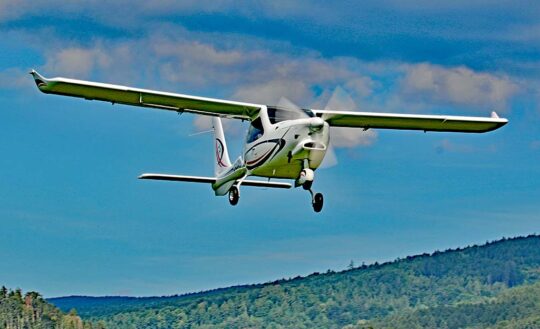 “EASA's CS-23 category is an internationally-recognized certification standard which will allow the new F2-CS23 to be easily accepted in all markets worldwide,” said Dieter Koehler, Project Manager the F2 and F4 projects.
Flight Design sees the F2-CS23 as "an excellent choice for flight schools with its wide and easy-to-enter cockpit, fuel efficiency, unique safety features, and state-of-the-art avionics suite. All new Flight Design aircraft come with carbon compensation up to TBO under Flight Design’s Pro-Climate plan." F2-CS23 follows the company's F2-LSA that began deliveries earlier in 2021.
“EASA's CS-23 category is an internationally-recognized certification standard which will allow the new F2-CS23 to be easily accepted in all markets worldwide,” said Dieter Koehler, Project Manager the F2 and F4 projects.
Flight Design sees the F2-CS23 as "an excellent choice for flight schools with its wide and easy-to-enter cockpit, fuel efficiency, unique safety features, and state-of-the-art avionics suite. All new Flight Design aircraft come with carbon compensation up to TBO under Flight Design’s Pro-Climate plan." F2-CS23 follows the company's F2-LSA that began deliveries earlier in 2021.
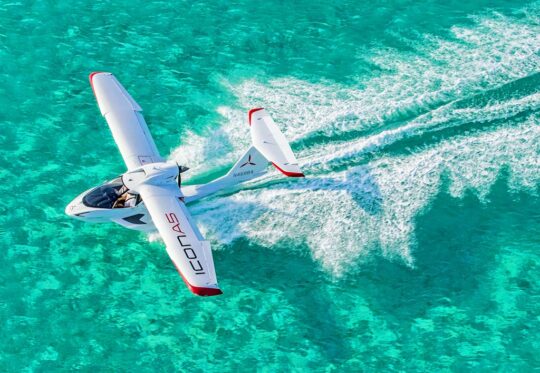 "In countries that do not have a Light-Sport category (Canada and others), the Type Certified version of the
"In countries that do not have a Light-Sport category (Canada and others), the Type Certified version of the 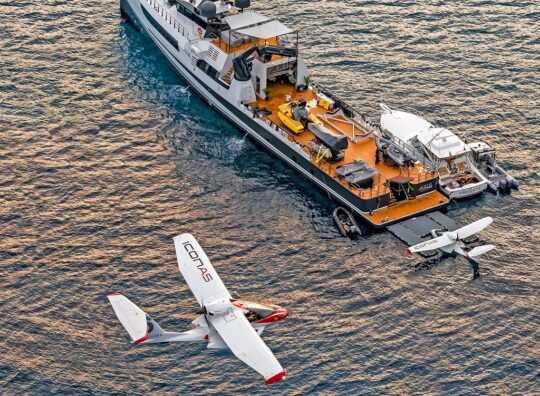 Primary Category certification also has benefits in the U.S., Icon reported. One is that any A&P is authorized to work on it. Because it is not a SLSA, owners will not need to use designated Icon Service Partners, though the company will still encourage them to do so.
Another benefit is international travel, for example, flying your Icon A5 to islands in the Caribbean, or to keep your A5 on a yacht when you are in another country (image). "Light-Sport Aircraft do not receive a Type Certificate," Icon explained, "so typically, special permission is required before you can fly in another country just like if you are flying an Experimental aircraft." Some exceptions exist, notably in the Bahamas, which does allow U.S.-registered LSAs. The Bahamas is further unique among other countries in that they accept FAA's Sport Pilot certificate.
Primary Category certification also has benefits in the U.S., Icon reported. One is that any A&P is authorized to work on it. Because it is not a SLSA, owners will not need to use designated Icon Service Partners, though the company will still encourage them to do so.
Another benefit is international travel, for example, flying your Icon A5 to islands in the Caribbean, or to keep your A5 on a yacht when you are in another country (image). "Light-Sport Aircraft do not receive a Type Certificate," Icon explained, "so typically, special permission is required before you can fly in another country just like if you are flying an Experimental aircraft." Some exceptions exist, notably in the Bahamas, which does allow U.S.-registered LSAs. The Bahamas is further unique among other countries in that they accept FAA's Sport Pilot certificate.
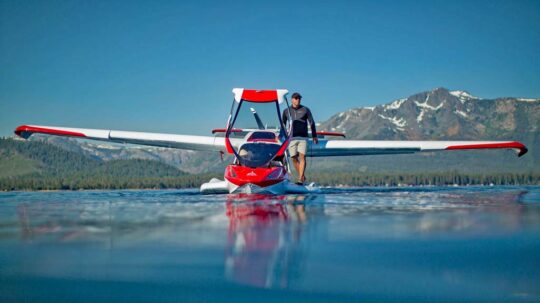 "International expansion has been a critical part of our business plan since day one,” said Jason Huang, President of Icon Aircraft. “People in the U.S. have been able to enjoy adventure flying in the Icon A5 for several years, and we will continue to produce the SLSA version. But now we are excited to introduce the A5 to others around the world. Type Certification is one of the many investments Icon has made to grow our capabilities and improve the A5. We know it will be appreciated by our international deposit holders and sales partners, and we are all very excited for this day to come."
"International expansion has been a critical part of our business plan since day one,” said Jason Huang, President of Icon Aircraft. “People in the U.S. have been able to enjoy adventure flying in the Icon A5 for several years, and we will continue to produce the SLSA version. But now we are excited to introduce the A5 to others around the world. Type Certification is one of the many investments Icon has made to grow our capabilities and improve the A5. We know it will be appreciated by our international deposit holders and sales partners, and we are all very excited for this day to come."
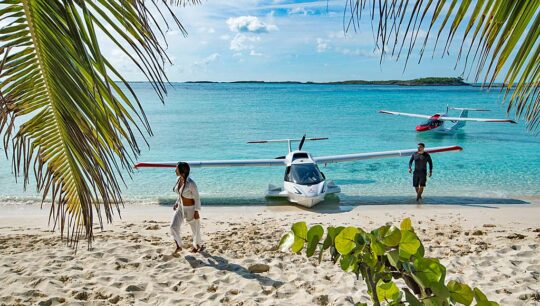 "Note that we will continue to make the SLSA version, as well," assured Huang. This continues the chance for American pilots to fly A5 without the need for an aviation medical, using only their driver's license in lieu of a medical approval.
Why not pursue approval using the coming regulation often referred to as Mosaic?
"Mosaic is an FAA initiative that doesn’t translate globally," stated the company. "Thus, pursuing Primary Category Certification is the action we needed to coincide with our global expansion plans."
"Note that we will continue to make the SLSA version, as well," assured Huang. This continues the chance for American pilots to fly A5 without the need for an aviation medical, using only their driver's license in lieu of a medical approval.
Why not pursue approval using the coming regulation often referred to as Mosaic?
"Mosaic is an FAA initiative that doesn’t translate globally," stated the company. "Thus, pursuing Primary Category Certification is the action we needed to coincide with our global expansion plans."
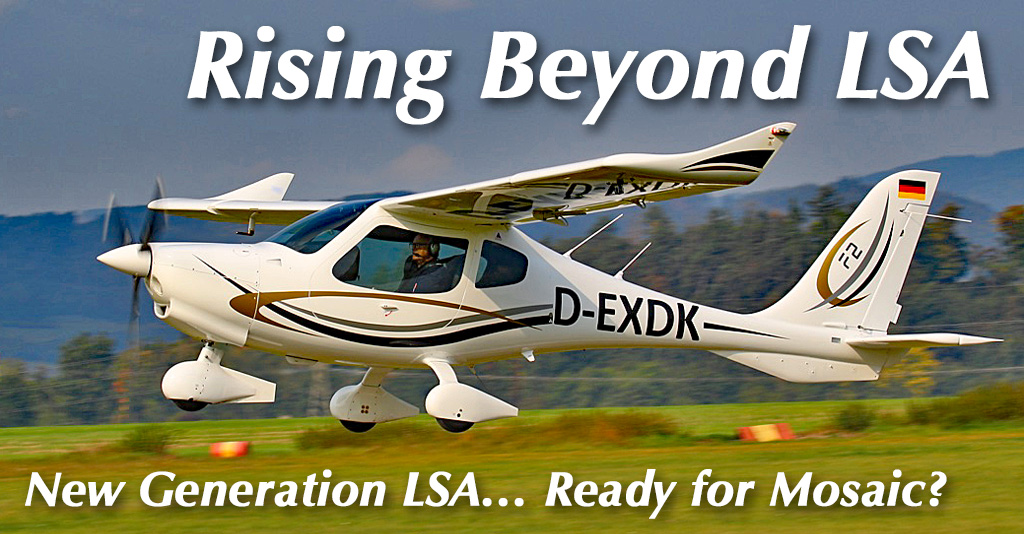
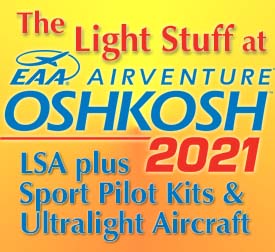 Affordable aircraft are important to many readers. I get that completely and that's why my Day 1 report focused on six aircraft that are very easy to own. Speedy aircraft are of also great interest. In general I like to say (modifying a view expressed by Apple Founder Steve Jobs) that — "It's all about the airplanes." Other high-traffic features of this website include the
Affordable aircraft are important to many readers. I get that completely and that's why my Day 1 report focused on six aircraft that are very easy to own. Speedy aircraft are of also great interest. In general I like to say (modifying a view expressed by Apple Founder Steve Jobs) that — "It's all about the airplanes." Other high-traffic features of this website include the 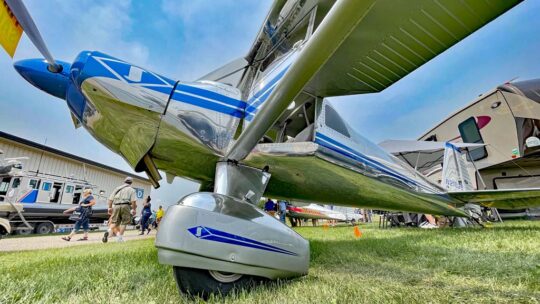 The magic of airshows and their ability to deliver in-person meetings showed their value yesterday at AirVenture Oshkosh. The following relates the story as best I could piece it together. Be advised this is not the final word on the subject. In fact, it is so fresh that changes are probable.
Our friends in EAA's Advocacy department, lead by Sean Elliot and aided by experienced staff held a special Mosaic meeting with FAA. In such a gathering at AirVenture 2021, EAA team members reportedly pushed back on Mosaic regulations, calling it "overly complex." (I was not present at this meeting, so this report is second hand.)
In the meeting, key FAA officials were present and in a remarkable development (which I am surely oversimplifying here), FAA agreed and in the space of a single meeting, listen to what occurred.
The magic of airshows and their ability to deliver in-person meetings showed their value yesterday at AirVenture Oshkosh. The following relates the story as best I could piece it together. Be advised this is not the final word on the subject. In fact, it is so fresh that changes are probable.
Our friends in EAA's Advocacy department, lead by Sean Elliot and aided by experienced staff held a special Mosaic meeting with FAA. In such a gathering at AirVenture 2021, EAA team members reportedly pushed back on Mosaic regulations, calling it "overly complex." (I was not present at this meeting, so this report is second hand.)
In the meeting, key FAA officials were present and in a remarkable development (which I am surely oversimplifying here), FAA agreed and in the space of a single meeting, listen to what occurred.
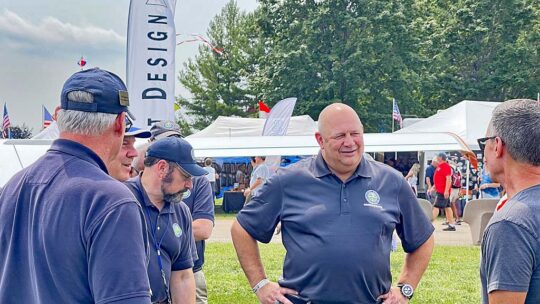
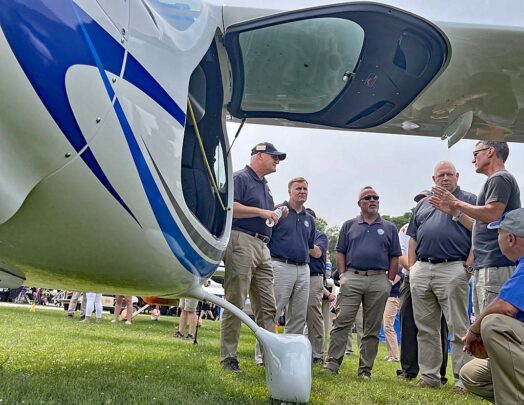
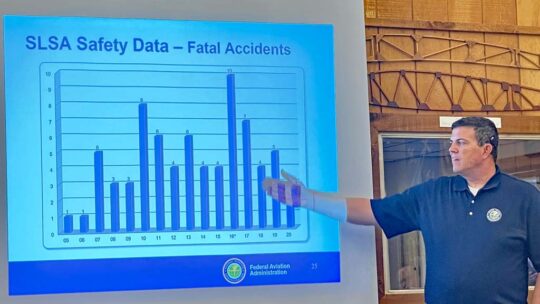
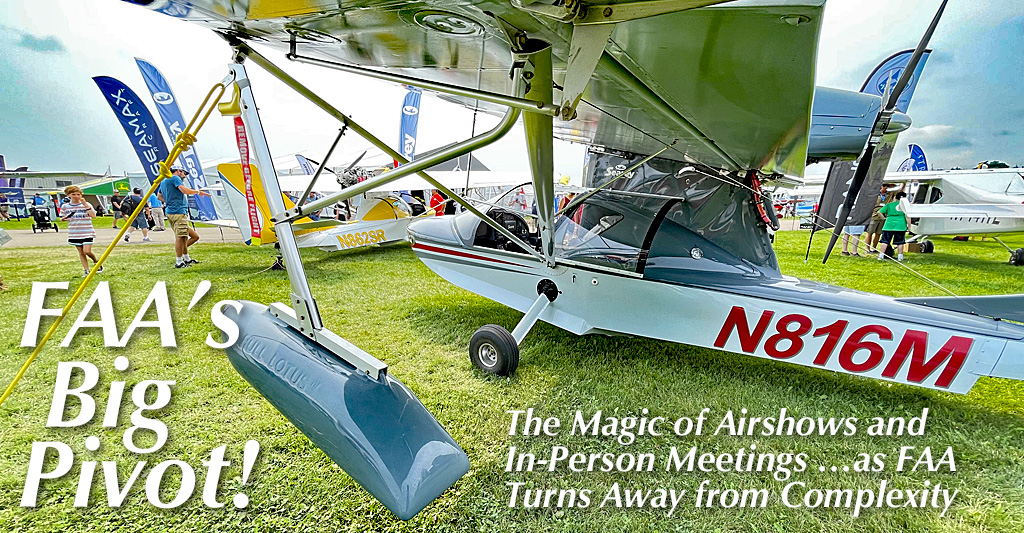

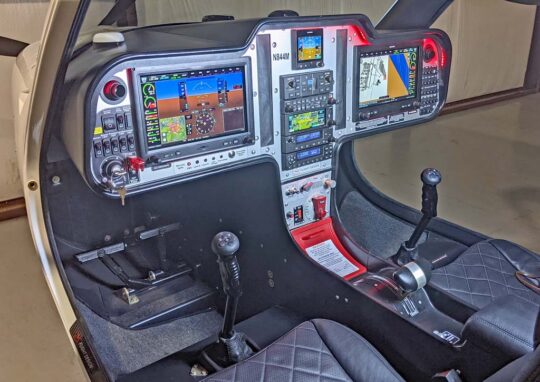
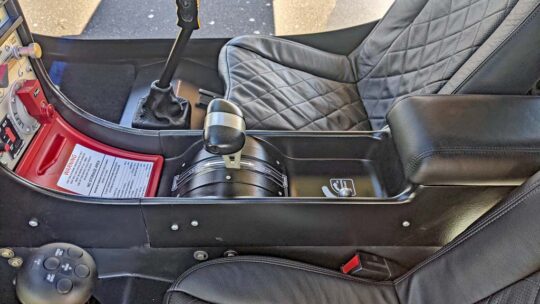
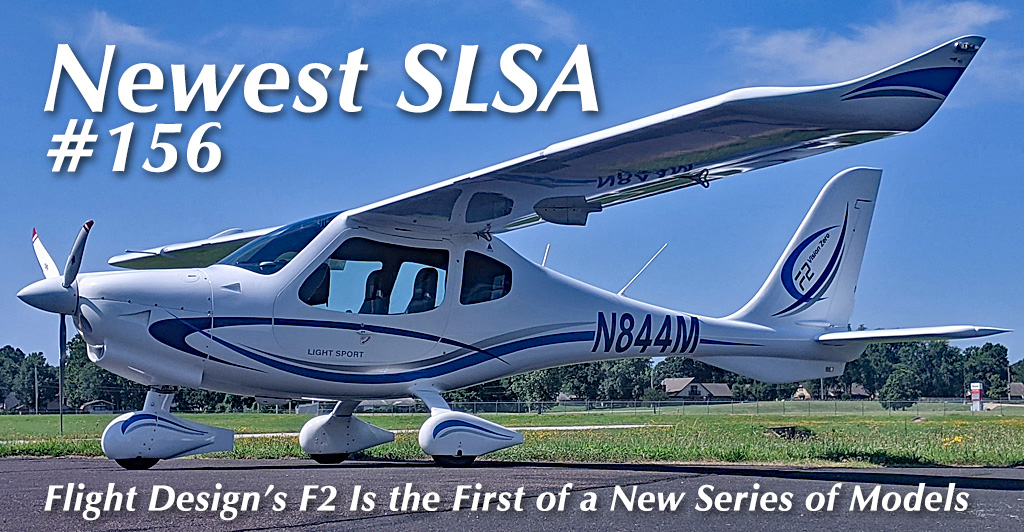
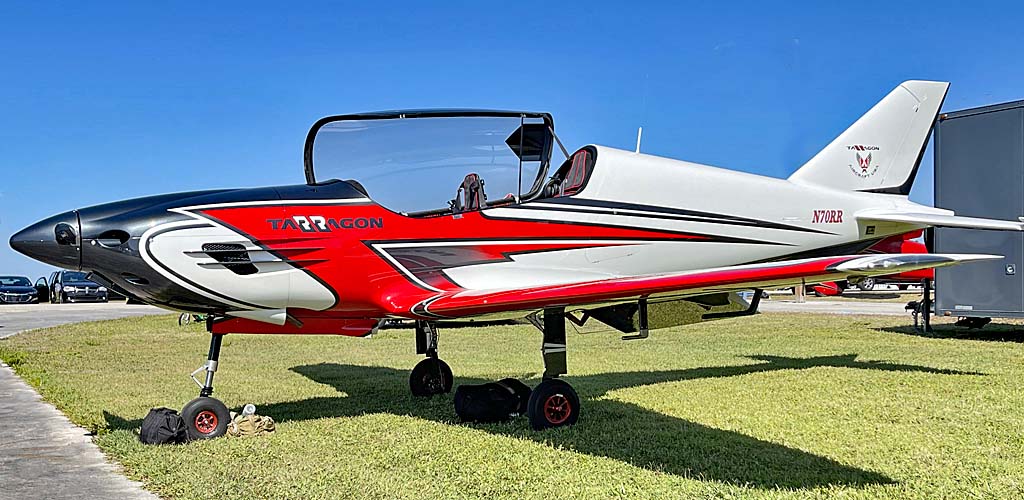
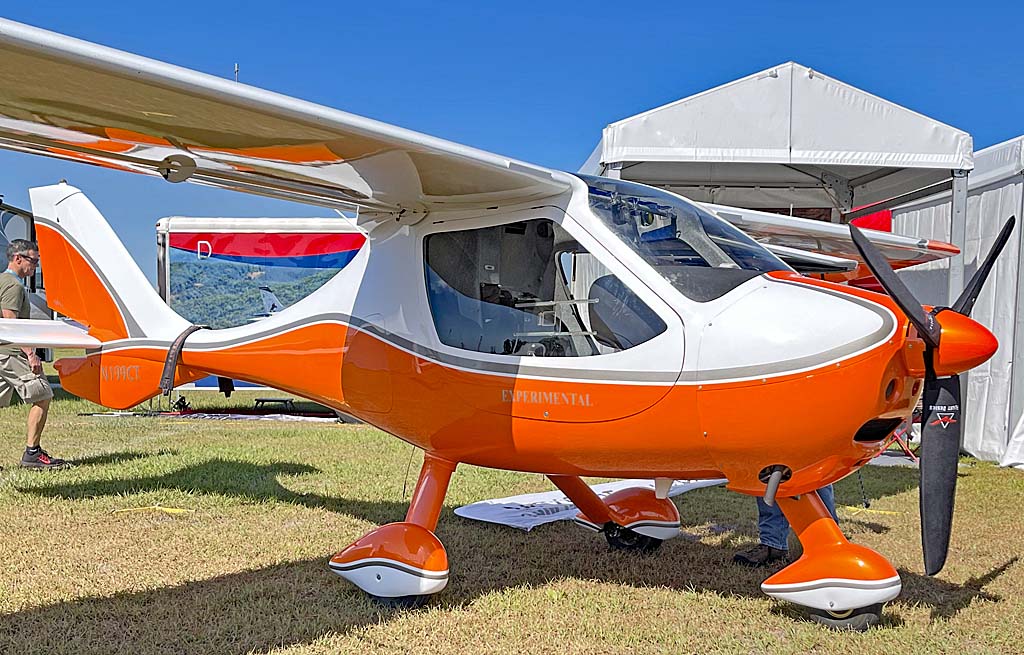
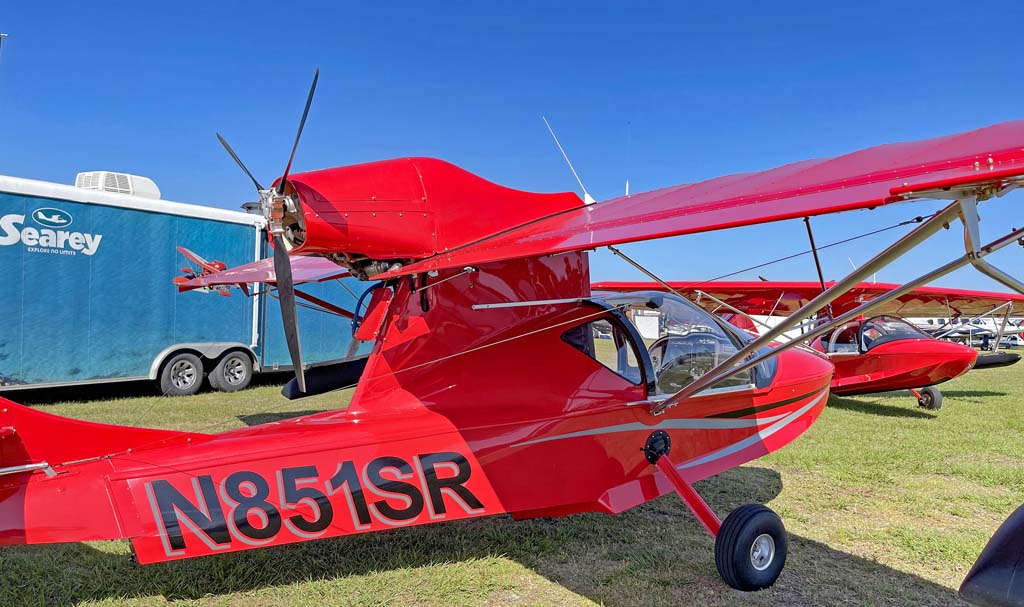
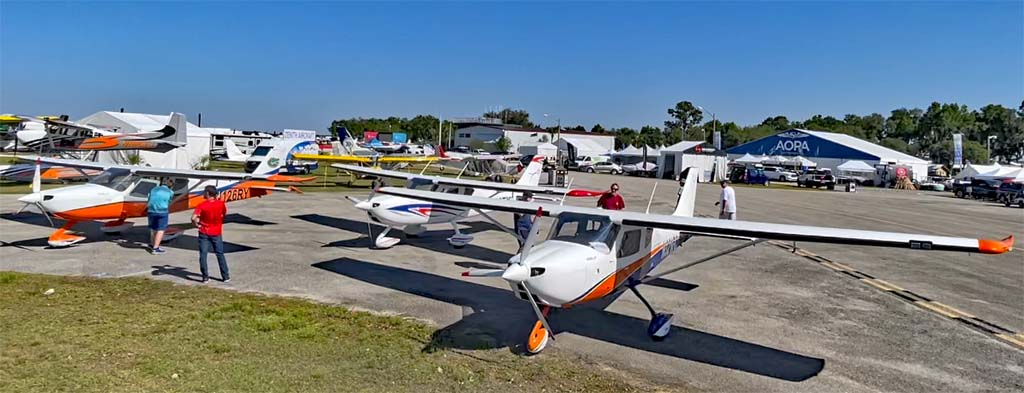
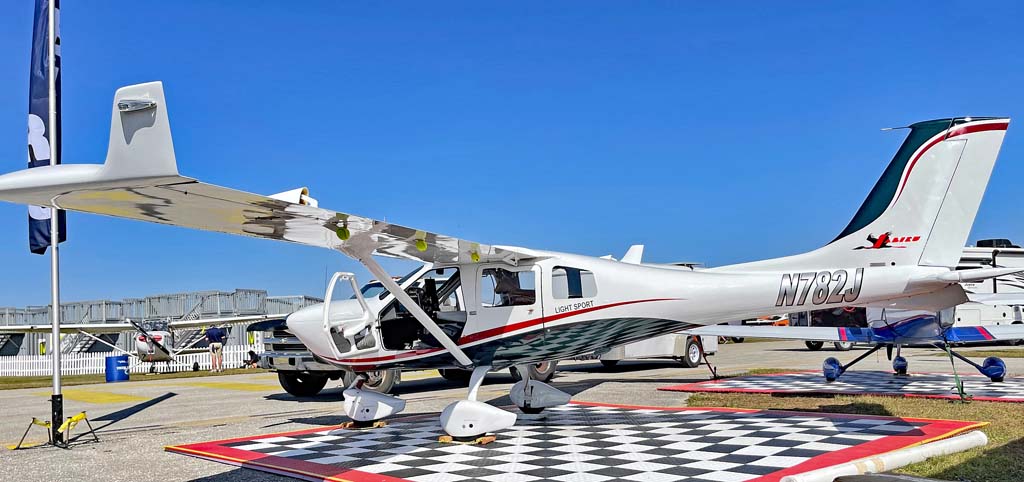
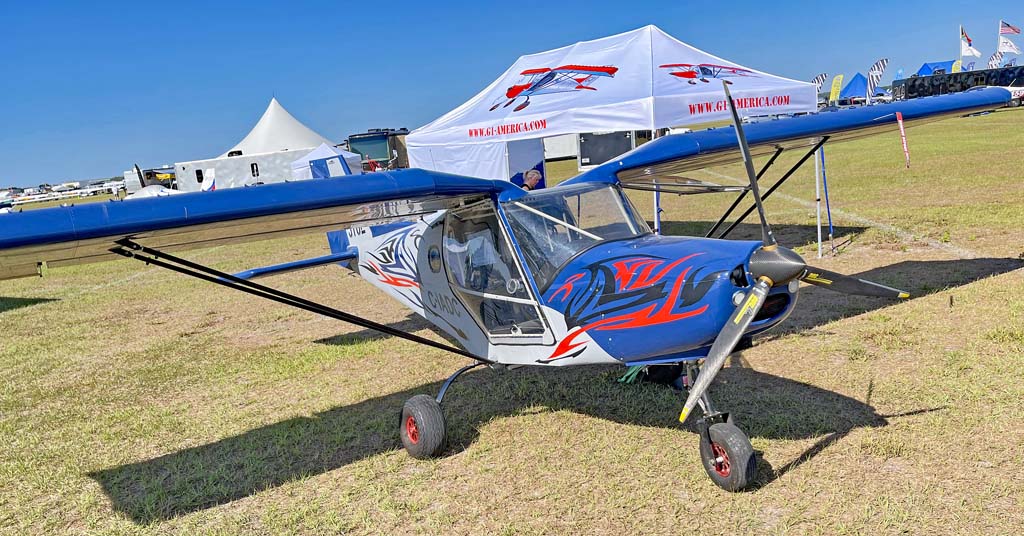
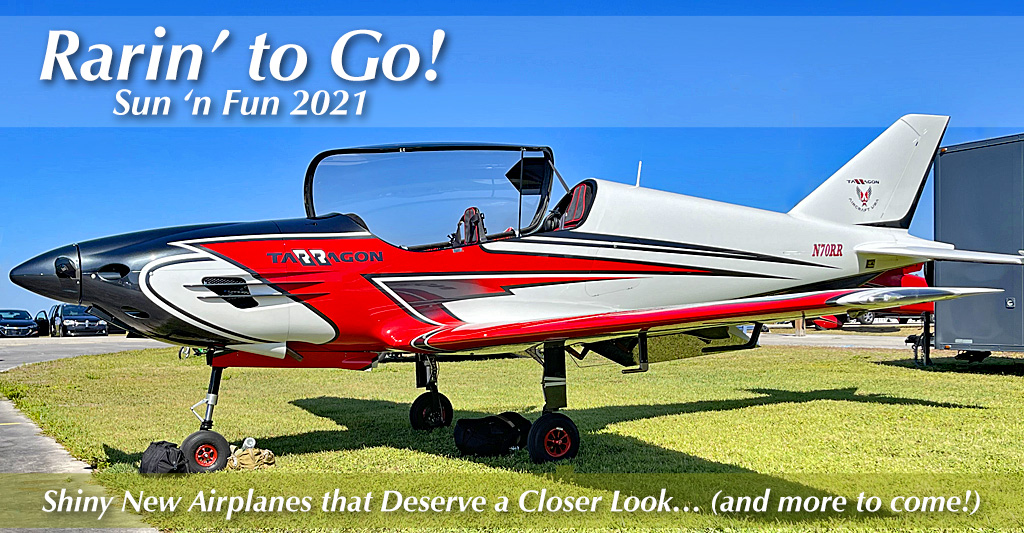
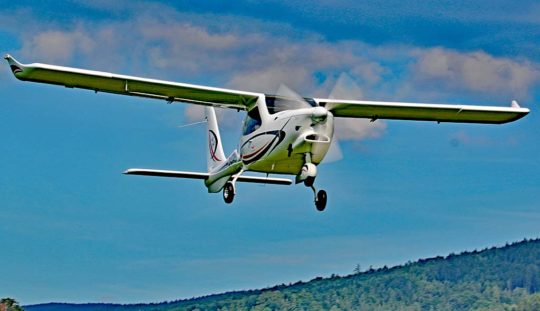 Then came the sophisticated CTLS, wholly redone for the American market. It enlarged the cabin and lengthened the fuselage becoming more deluxe throughout.
Now, we come to F2 in what I'm calling the third generation of the iconic shape that still leads the LSA market after almost 17 years. The one and only example presently in America is currently based at
Then came the sophisticated CTLS, wholly redone for the American market. It enlarged the cabin and lengthened the fuselage becoming more deluxe throughout.
Now, we come to F2 in what I'm calling the third generation of the iconic shape that still leads the LSA market after almost 17 years. The one and only example presently in America is currently based at 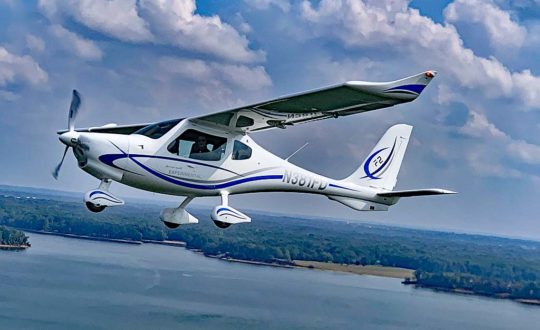 Nearly every airshow was cancelled for 2020 amidst the global economic carnage driven by lockdowns and travel restrictions to contain Covid.
Well, every show was scrubbed except the Midwest LSA Expo in Mt. Vernon, Illinois. Because that one and only event happened — with no negatives regarding the virus, so far as I know — I got to see and fly Flight Design's latest and greatest, the F2. Not only was the airshow a welcome change from the social barriers everyone had faced over the last few months, but Midwest 2020 provided a venue to see and fly the new model.
"CTSW was a Porsche. CTLS was a Corvette. F2 is a Cadillac," said Tom Gutmann, Jr., the younger half of the father and son
Nearly every airshow was cancelled for 2020 amidst the global economic carnage driven by lockdowns and travel restrictions to contain Covid.
Well, every show was scrubbed except the Midwest LSA Expo in Mt. Vernon, Illinois. Because that one and only event happened — with no negatives regarding the virus, so far as I know — I got to see and fly Flight Design's latest and greatest, the F2. Not only was the airshow a welcome change from the social barriers everyone had faced over the last few months, but Midwest 2020 provided a venue to see and fly the new model.
"CTSW was a Porsche. CTLS was a Corvette. F2 is a Cadillac," said Tom Gutmann, Jr., the younger half of the father and son 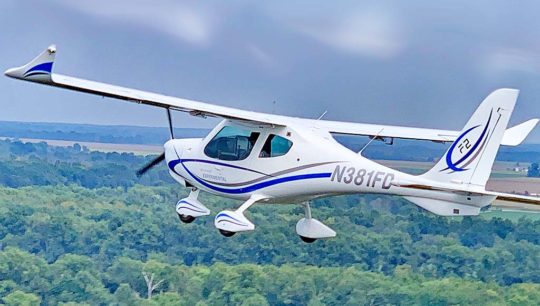 Tom explained that F2 may look similar to CT but is a nose-to-tail, tip-to-tip refreshed design. It has been some time in development because as Tom noted, "Flight Design engineers had to rework the whole airplane. It is significantly larger than CTLS yet final production models should weigh no more." That's some accomplishment!
It is also built quite differently. All CTLS are essentially "hand made" with hand-layup molds that display the skill of factory workers yet makes each one unique. For F2, Tom said, Flight Design uses molds created on 5-axis CNC shaping tools so each one is fabricated to precise specifications. You may not be able to see the difference in construction but the new method is far better for serial production.
Tom explained that F2 may look similar to CT but is a nose-to-tail, tip-to-tip refreshed design. It has been some time in development because as Tom noted, "Flight Design engineers had to rework the whole airplane. It is significantly larger than CTLS yet final production models should weigh no more." That's some accomplishment!
It is also built quite differently. All CTLS are essentially "hand made" with hand-layup molds that display the skill of factory workers yet makes each one unique. For F2, Tom said, Flight Design uses molds created on 5-axis CNC shaping tools so each one is fabricated to precise specifications. You may not be able to see the difference in construction but the new method is far better for serial production.
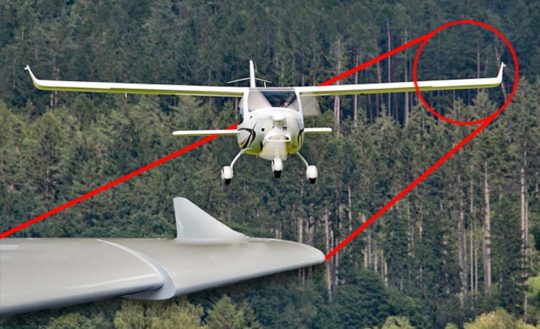 "F2 is manufactured to close tolerances in pre-impregnated carbon fiber for great structural strength and light weight," said Flight Design in Germany. With prepreg carbon fiber from American company Hexcel, F2's honeycomb-core fuselage signifies a big step forward.
Likewise, F2's new wing is a major redesign; the outboard sections feature aerodynamic cuffs (nearby photo).
F2’s tail is all-new as well. CTLS's full-flying stabilator is replaced with a wider stabilizer that has a discrete two-piece elevator with a center section that remains stationary forming what's often called a duck tail. This aids in meeting the ASTM handling requirement. One result is that the airplane does not pitch up during a departure stall.
"F2 is manufactured to close tolerances in pre-impregnated carbon fiber for great structural strength and light weight," said Flight Design in Germany. With prepreg carbon fiber from American company Hexcel, F2's honeycomb-core fuselage signifies a big step forward.
Likewise, F2's new wing is a major redesign; the outboard sections feature aerodynamic cuffs (nearby photo).
F2’s tail is all-new as well. CTLS's full-flying stabilator is replaced with a wider stabilizer that has a discrete two-piece elevator with a center section that remains stationary forming what's often called a duck tail. This aids in meeting the ASTM handling requirement. One result is that the airplane does not pitch up during a departure stall.
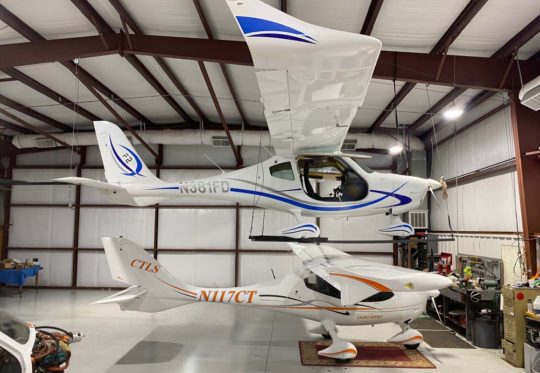 The altered horizontal tail works cooperatively with the wing cuffs to make a highly stall-resistant airframe, a feature FAA admires so much they gave Icon Aircraft
The altered horizontal tail works cooperatively with the wing cuffs to make a highly stall-resistant airframe, a feature FAA admires so much they gave Icon Aircraft 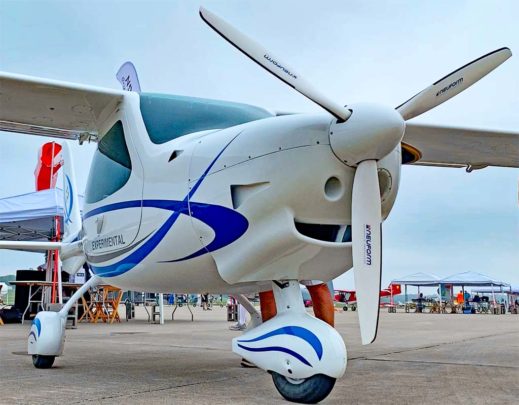
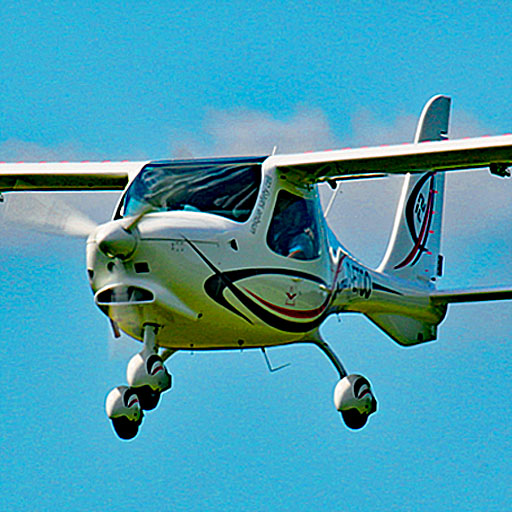 Cruise speed at a low altitude (approximately 3,000 feet density altitude) exceeded 115 knots while burning barely over 4 gallons an hour; Rotax's 912iS is known for its fuel miserliness. This allows a topped-off F2 to fly close to 1,000 statute miles. You can fly cross country to a destination and return to base without buying fuel. I once enjoyed this quality while
Cruise speed at a low altitude (approximately 3,000 feet density altitude) exceeded 115 knots while burning barely over 4 gallons an hour; Rotax's 912iS is known for its fuel miserliness. This allows a topped-off F2 to fly close to 1,000 statute miles. You can fly cross country to a destination and return to base without buying fuel. I once enjoyed this quality while 
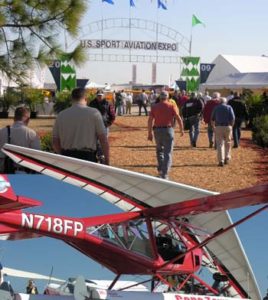 Although a mirror reflection of the greater global economy, many pilots are stunned that airshow after airshow has fallen to the virus. It seems like two or three years ago when, back in February 2020, Videoman Dave and I covered the
Although a mirror reflection of the greater global economy, many pilots are stunned that airshow after airshow has fallen to the virus. It seems like two or three years ago when, back in February 2020, Videoman Dave and I covered the 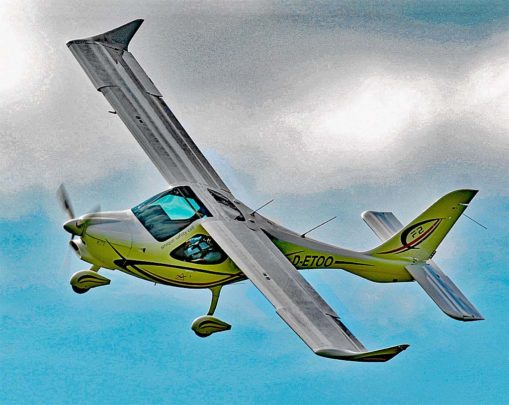 Tom has run
Tom has run 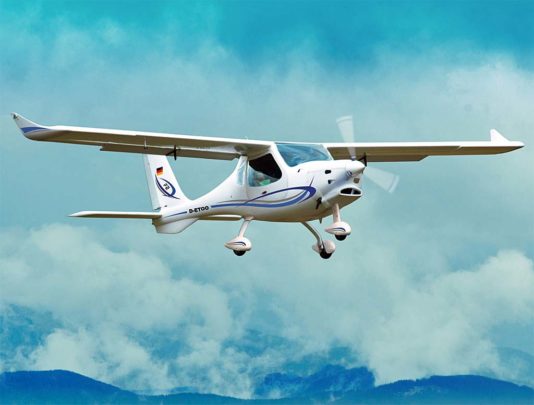 "I'm very impressed with F2. It feels like a bigger airplane, very solid in the air. More stable than I expected. Very easy to land." He's comparing to the CTLS that so many other pilots know.
"F2 feels more stable in the air compared to our CTLS, which offers a sportier feel." Pressing him for details, Tom recounted the following story from a recent flight. It involved F2's autopilot.
"As you know, with the
"I'm very impressed with F2. It feels like a bigger airplane, very solid in the air. More stable than I expected. Very easy to land." He's comparing to the CTLS that so many other pilots know.
"F2 feels more stable in the air compared to our CTLS, which offers a sportier feel." Pressing him for details, Tom recounted the following story from a recent flight. It involved F2's autopilot.
"As you know, with the 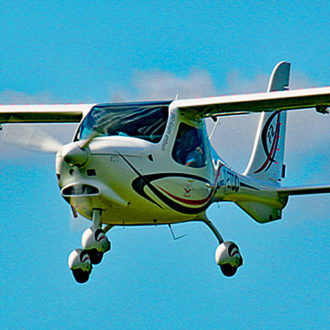 In one of the nearby photos taken from the nose of F2, the vertical surface of the tailplane appears enormous, one to rival the very tall tail on an
In one of the nearby photos taken from the nose of F2, the vertical surface of the tailplane appears enormous, one to rival the very tall tail on an 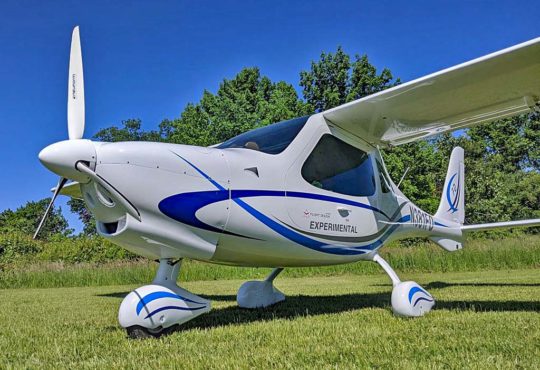 When the flight is over, F2 is reportedly easier to land. I asked how?
"A longer wheelbase reduces porpoising and a single beam landing gear absorbs rebound tendency. "We also think that beam gear will end up being more rugged."
Another helpful feature is the single throttle and brake lever (image below): forward is go; back is stop. Simple. Other designs have used this technique, good because the pilot's hand never needs to move during the critical touchdown and rollout phase of flight.
When the flight is over, F2 is reportedly easier to land. I asked how?
"A longer wheelbase reduces porpoising and a single beam landing gear absorbs rebound tendency. "We also think that beam gear will end up being more rugged."
Another helpful feature is the single throttle and brake lever (image below): forward is go; back is stop. Simple. Other designs have used this technique, good because the pilot's hand never needs to move during the critical touchdown and rollout phase of flight.
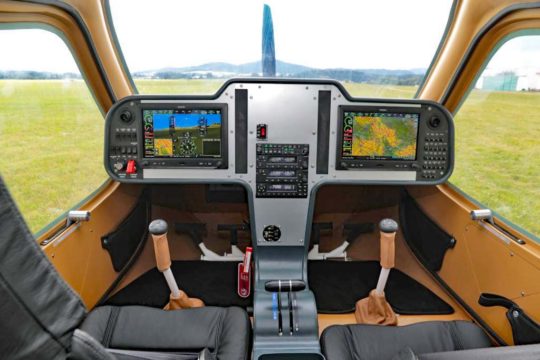
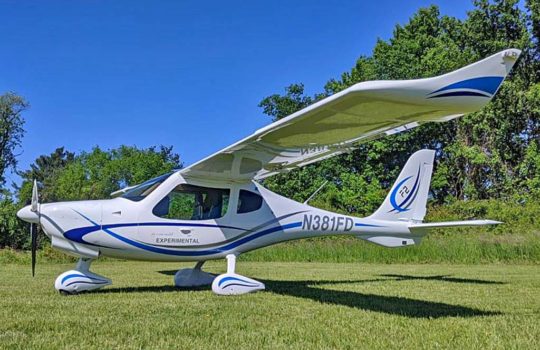
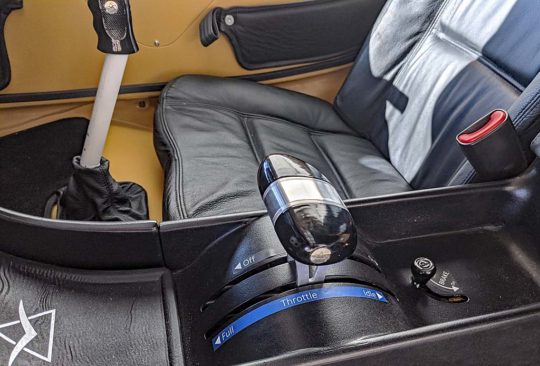
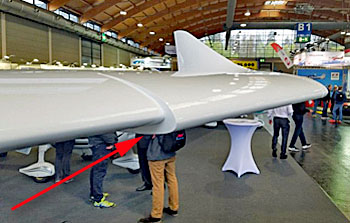 As we discussed the two planes, Tom said he thought I could do the same maneuvers with F2 that I'd done with the Icon A5 and I'd get a similar sensation.
"Departure stalls simply don't," Tom described. "With full flaps, it will 'nod' a bit, a kind of pre-stall but with neutral flaps the stick remains effective at all times."
Tom worked closely with Flight Design during development of F2, playing key roles. He closed saying, "I knew we could achieve those characteristics but I didn't know how well it would fly."
I could almost see his smile over the phone.
I look forward to experience F2, perhaps at the
As we discussed the two planes, Tom said he thought I could do the same maneuvers with F2 that I'd done with the Icon A5 and I'd get a similar sensation.
"Departure stalls simply don't," Tom described. "With full flaps, it will 'nod' a bit, a kind of pre-stall but with neutral flaps the stick remains effective at all times."
Tom worked closely with Flight Design during development of F2, playing key roles. He closed saying, "I knew we could achieve those characteristics but I didn't know how well it would fly."
I could almost see his smile over the phone.
I look forward to experience F2, perhaps at the 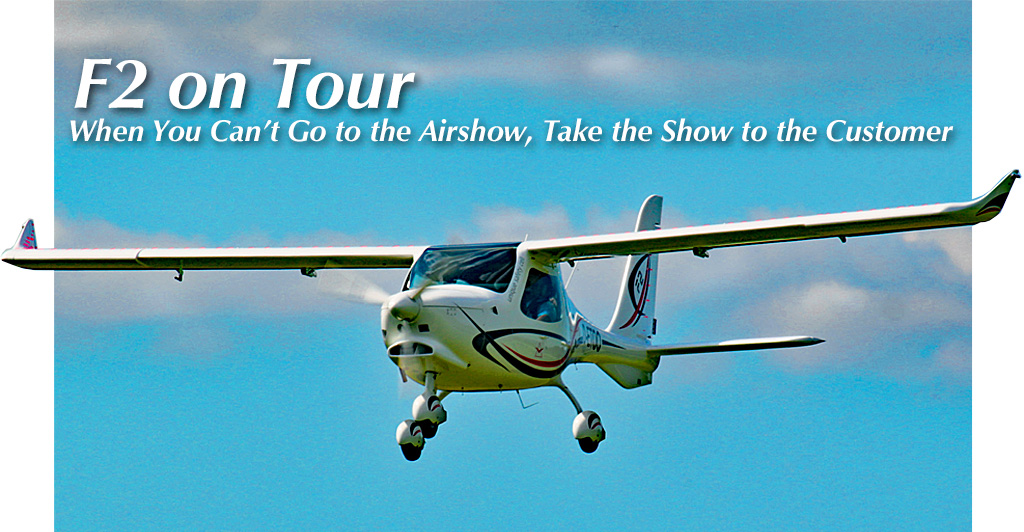
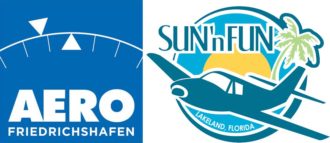 Of course, I refer to
Of course, I refer to 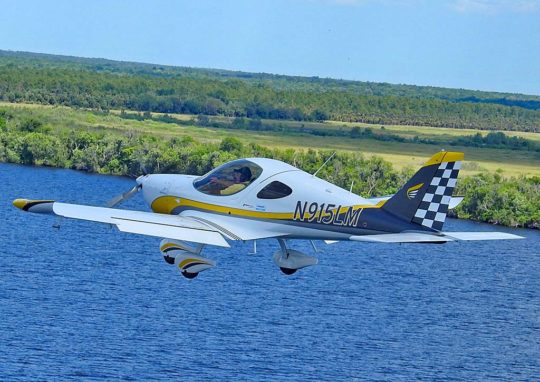 Bristell with
Bristell with 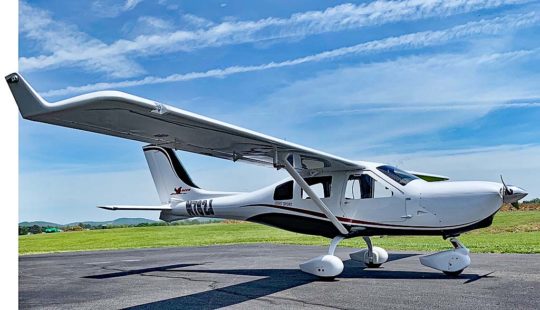 Representative U.S. Sport Planes, led by industry veteran Scott Severen, has demonstrated this baggage capacity with photos showing a
Representative U.S. Sport Planes, led by industry veteran Scott Severen, has demonstrated this baggage capacity with photos showing a 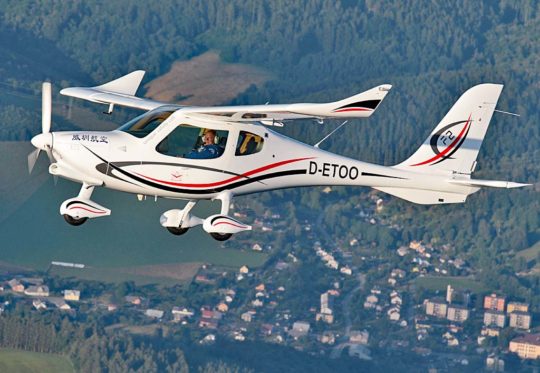 Since I first saw the F2 in mock up, Flight Design has redesigned the intake for two reasons: "to reduce drag as we confirmed the older version was very functional but draggy; and for aesthetic reasons," said the company. "Flight Design team designer and Head of Airworthiness, Christian Majunke, designed conceptually. He also designed a rather novel installation of the coolant and oil radiators," elaborated Flight Design USA representative, Tom Peghiny.
Also new panel is an SLSA panel with twin G3X screens, a Garmin GTR 225 Com, Garmin GTX 345 ADSB in and out transponder, Garmin GMC 507 autopilot control head (with dual axis autopilot), and Garmin GMA 245 intercom.
Pilot controls remain essentially as they were on the CT-series but note the combined single lever throttle and brake system.
"Our F2 prototype number 002 arrived at port in Miami in preparation for display at Sun n Fun 2020," said Tom. Like most vendors, Flight Design USA hoped to go forward with the Lakeland show but will now unveil the new model at Oshkosh 2020 (assuming it remains on schedule).
"After completing all SLSA required flight testing including the demanding ASTM 3180 anti-spin requirements, production has started on the first aircraft from production tooling in Germany, Ukraine and the Czech Republic," concluded Tom.
Since I first saw the F2 in mock up, Flight Design has redesigned the intake for two reasons: "to reduce drag as we confirmed the older version was very functional but draggy; and for aesthetic reasons," said the company. "Flight Design team designer and Head of Airworthiness, Christian Majunke, designed conceptually. He also designed a rather novel installation of the coolant and oil radiators," elaborated Flight Design USA representative, Tom Peghiny.
Also new panel is an SLSA panel with twin G3X screens, a Garmin GTR 225 Com, Garmin GTX 345 ADSB in and out transponder, Garmin GMC 507 autopilot control head (with dual axis autopilot), and Garmin GMA 245 intercom.
Pilot controls remain essentially as they were on the CT-series but note the combined single lever throttle and brake system.
"Our F2 prototype number 002 arrived at port in Miami in preparation for display at Sun n Fun 2020," said Tom. Like most vendors, Flight Design USA hoped to go forward with the Lakeland show but will now unveil the new model at Oshkosh 2020 (assuming it remains on schedule).
"After completing all SLSA required flight testing including the demanding ASTM 3180 anti-spin requirements, production has started on the first aircraft from production tooling in Germany, Ukraine and the Czech Republic," concluded Tom.
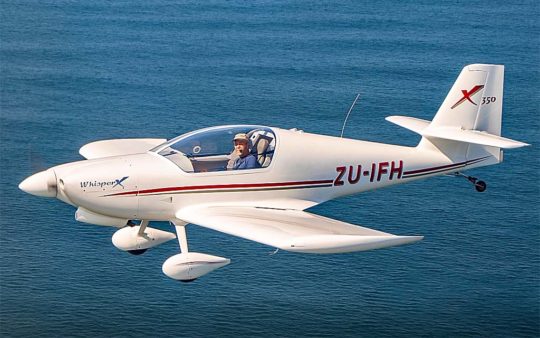 At Sun 'n Fun 2020, Deon expected to introduce Whisper to American kit builders. Alas, as with the rest of this group, you probably won't see it until July in Wisconsin.
At Sun 'n Fun 2020, Deon expected to introduce Whisper to American kit builders. Alas, as with the rest of this group, you probably won't see it until July in Wisconsin.
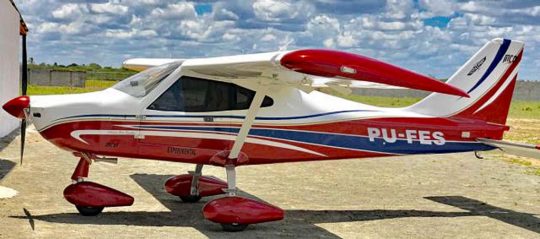 Bruno will be aided in his approach to the U.S. market by longtimer, Ed Ricks, who once helped the Paradise Aircraft people with their
Bruno will be aided in his approach to the U.S. market by longtimer, Ed Ricks, who once helped the Paradise Aircraft people with their 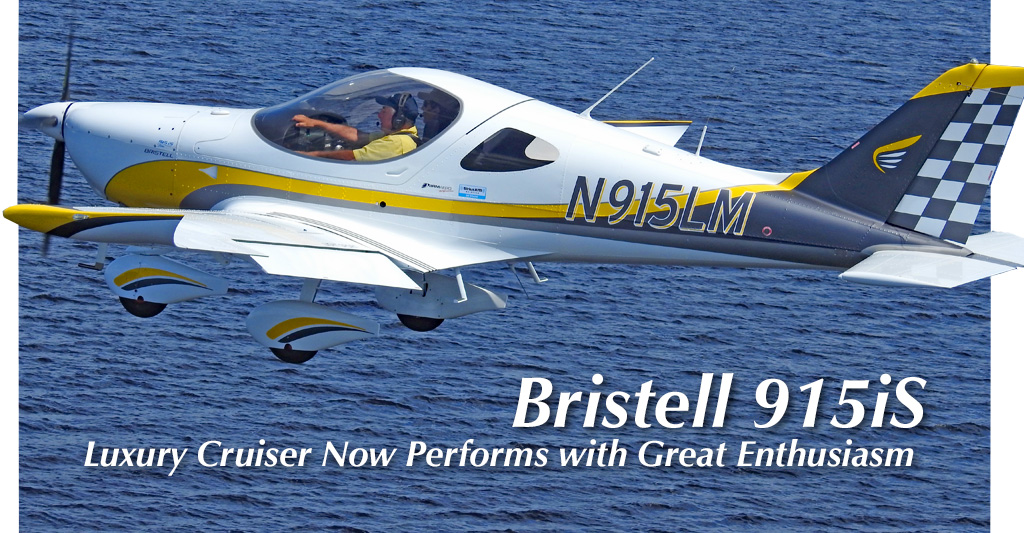
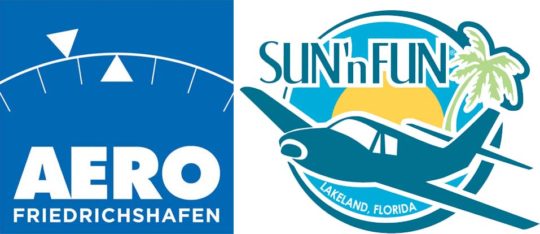 Meanwhile, I have been producing more content here on ByDanJohnson.com so everyone sheltering-in-place can at least fantasy fly their favorite flying machine. I will also continue with the "Virtual
Meanwhile, I have been producing more content here on ByDanJohnson.com so everyone sheltering-in-place can at least fantasy fly their favorite flying machine. I will also continue with the "Virtual 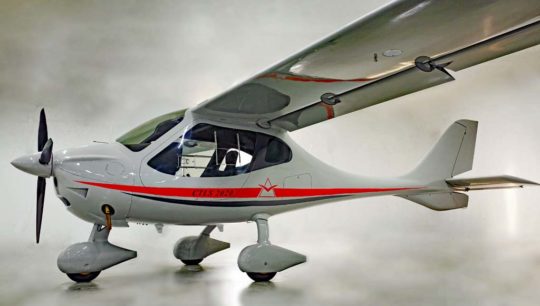 Changes for 2020 include a reshaped and longer cowling, Blackline propeller with new spinner, fully integrated landing light, and an additional NACA inlet to improve cooling. Other aerodynamic improvements include new landing gear legs with internal brake lines and new low drag wheel fairings. This all leads to significantly reduced drag and an increase in maximum speed. The company reports, "[These] aerodynamic modifications have made the CTLS 2020 nearly 10 knots faster!"
Changes for 2020 include a reshaped and longer cowling, Blackline propeller with new spinner, fully integrated landing light, and an additional NACA inlet to improve cooling. Other aerodynamic improvements include new landing gear legs with internal brake lines and new low drag wheel fairings. This all leads to significantly reduced drag and an increase in maximum speed. The company reports, "[These] aerodynamic modifications have made the CTLS 2020 nearly 10 knots faster!"
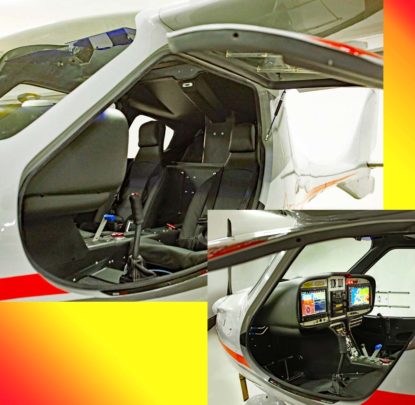 A new
A new  "Our F2 Light-Sport Aircraft model is fully ASTM-compliant after fine tuning," noted the company. "Our first airplanes will be delivered to customers in June 2020. Careful engineering allowed us to bring this complex airplane under the maximum allowed take-off weight (of 1,320 pounds or 600 kilograms)."
For European consumption, Flight Design is pursuing CS-23 approval (similar to FAA's Part 23) for their two seat F2, however, this model will be able to fly at 650 kilograms (1,430 pounds) of maximum takeoff weight when it is granted a CS-23 certificate. "We think this will be ideal for modern flight schools and private pilots," the company stated.
Construction of Flight Design's newest uses a new composite supplier, Hexcel.
"Our F2 Light-Sport Aircraft model is fully ASTM-compliant after fine tuning," noted the company. "Our first airplanes will be delivered to customers in June 2020. Careful engineering allowed us to bring this complex airplane under the maximum allowed take-off weight (of 1,320 pounds or 600 kilograms)."
For European consumption, Flight Design is pursuing CS-23 approval (similar to FAA's Part 23) for their two seat F2, however, this model will be able to fly at 650 kilograms (1,430 pounds) of maximum takeoff weight when it is granted a CS-23 certificate. "We think this will be ideal for modern flight schools and private pilots," the company stated.
Construction of Flight Design's newest uses a new composite supplier, Hexcel.
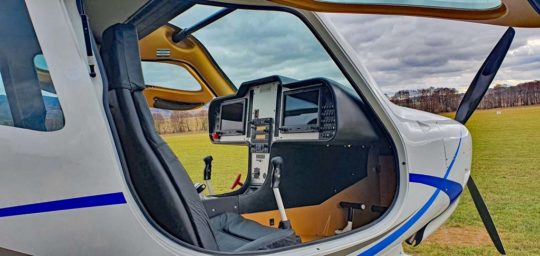 Late in 2017, a Flight Design review concluded that prepregs could deliver a more consistent final product by ensuring constant material quality and processing parameters and could produce a lighter and stronger aircraft at a more competitive overall cost. The low-temperature cure could be done outside an autoclave. The latter reduces tooling costs and can boost build rates. Following careful analysis, the company went with Hexcel. Prepreg materials — "pre-impregnated" composite fibers have an epoxy material already present — were first used for the F2 prototype.
Late in 2017, a Flight Design review concluded that prepregs could deliver a more consistent final product by ensuring constant material quality and processing parameters and could produce a lighter and stronger aircraft at a more competitive overall cost. The low-temperature cure could be done outside an autoclave. The latter reduces tooling costs and can boost build rates. Following careful analysis, the company went with Hexcel. Prepreg materials — "pre-impregnated" composite fibers have an epoxy material already present — were first used for the F2 prototype.
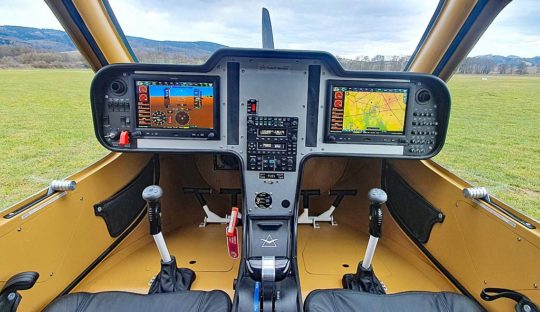 Flight Design began to review the market for available material options with a key part of its strategy to find and qualify a prepreg system that is not traditionally used in higher cost autoclave production for aerospace applications.
Flight Design began to review the market for available material options with a key part of its strategy to find and qualify a prepreg system that is not traditionally used in higher cost autoclave production for aerospace applications.
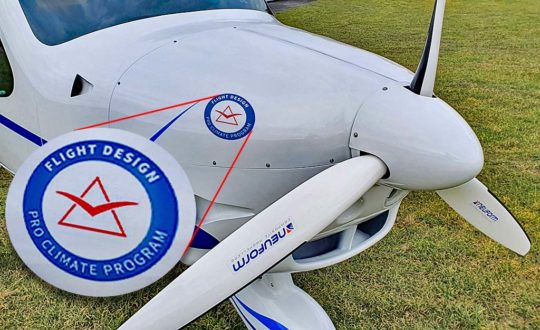 Already in operation since March 1st, Flight Design will "offset" the carbon emissions from the fuel burned by their airplanes during the first 2,000 hours of operation. They'll do this by employing the
Already in operation since March 1st, Flight Design will "offset" the carbon emissions from the fuel burned by their airplanes during the first 2,000 hours of operation. They'll do this by employing the 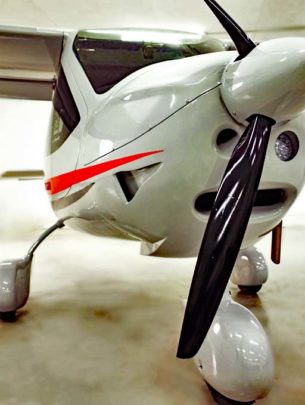 Offsets will come from cash contributions by Flight Design to programs that meet internationally-accepted standards. Funds will be deployed to planting more trees and other actions that consume CO2.
Offsets will come from cash contributions by Flight Design to programs that meet internationally-accepted standards. Funds will be deployed to planting more trees and other actions that consume CO2.
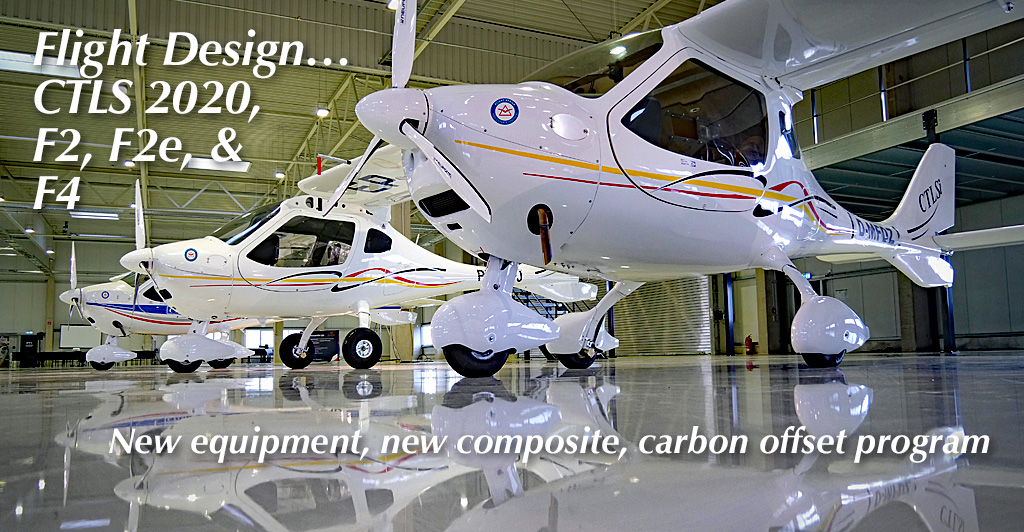
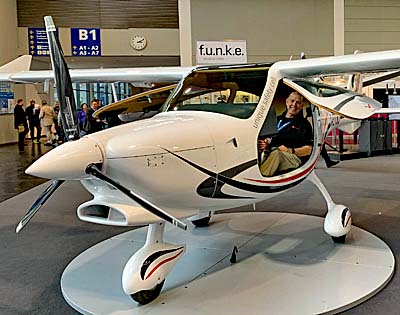 Then came a pause in the juggernaut that is
Then came a pause in the juggernaut that is 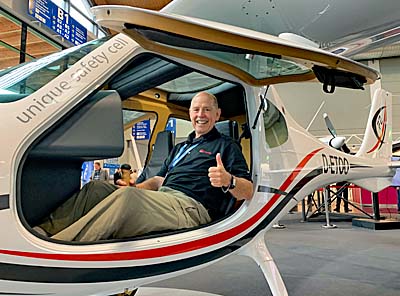 F2's cabin is 3.1 inches wider — now 51 inches wide, among the broadest in the category — and two inches taller than the CT series’ cabins. Door dimensions have also been increased, making for easier entry and exit. The entry door is set 2.3 inches lower than those in the CT series and pilots who are less flexible will appreciate these changes. Four cabin windows and a sunroof in the rear give the cockpit an open feeling and improve overall visibility, boasts Flight Design.
F2 is available with either a 100-horsepower
F2's cabin is 3.1 inches wider — now 51 inches wide, among the broadest in the category — and two inches taller than the CT series’ cabins. Door dimensions have also been increased, making for easier entry and exit. The entry door is set 2.3 inches lower than those in the CT series and pilots who are less flexible will appreciate these changes. Four cabin windows and a sunroof in the rear give the cockpit an open feeling and improve overall visibility, boasts Flight Design.
F2 is available with either a 100-horsepower 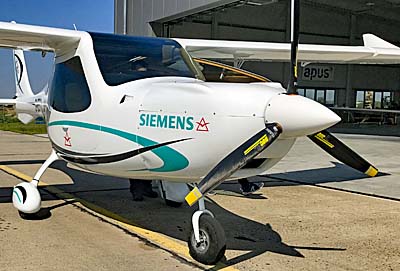 On its first successful first flight, Flight Design said, "Energy consumption for take-off and cruise was within the expected range, and the temperatures in the system were more positive than expected."
Flight Design created F2e with partners
On its first successful first flight, Flight Design said, "Energy consumption for take-off and cruise was within the expected range, and the temperatures in the system were more positive than expected."
Flight Design created F2e with partners 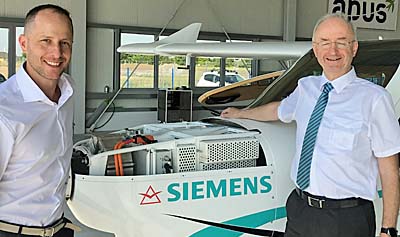
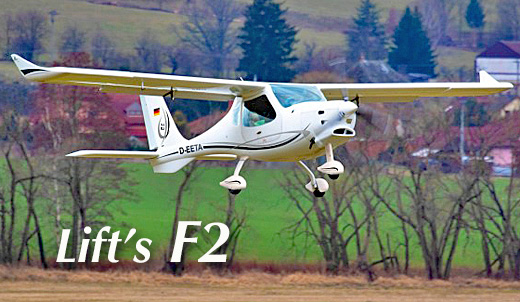
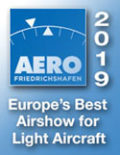 Jetting straight from Sun 'n Fun, we were able to arrive at
Jetting straight from Sun 'n Fun, we were able to arrive at 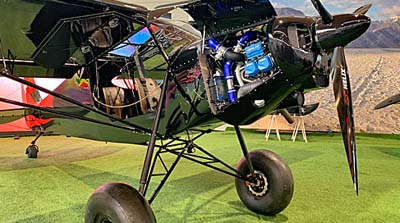 Zlin Ultra with Rotax 915iS
Zlin Ultra with Rotax 915iS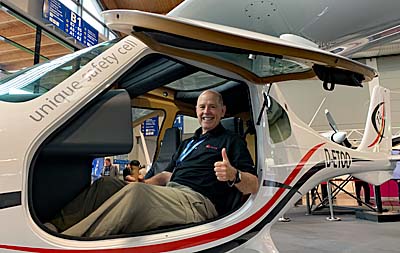
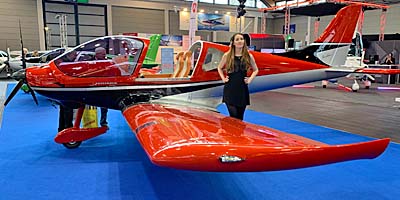 Belmont Aero DW200
Belmont Aero DW200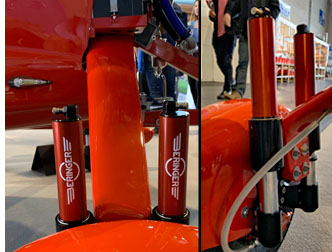 Beringer Everywhere
Beringer Everywhere